Looking for the best museums in Thuringia? These are the best ones:

City Castle in Weimar
WeimarSchloss Weimar, also known as Stadtschloss, is a significant historical site in Weimar, Thuringia, Germany. It served as the residence of the dukes of Saxe-Weimar and Eisenach, adding to its historical importance. The palace is a part of the World Heritage Site 'Classical Weimar', which highlights Weimar's cultural significance during the late 18th and 19th centuries.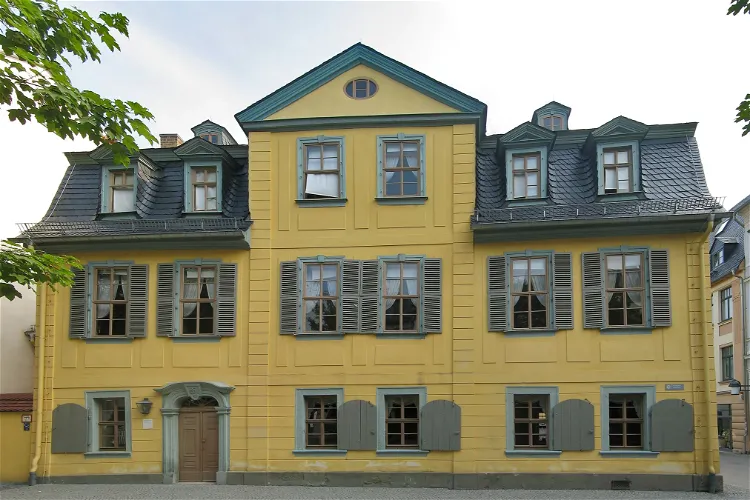
Schiller's House
WeimarSchiller's House, also known as Schillerhaus, is a museum located in Weimar. It is managed by the Klassik Stiftung Weimar and was once the home of the renowned German poet, philosopher, physician, historian, and playwright Friedrich Schiller. The museum offers a unique opportunity to explore the life and works of Schiller in the very place he once lived.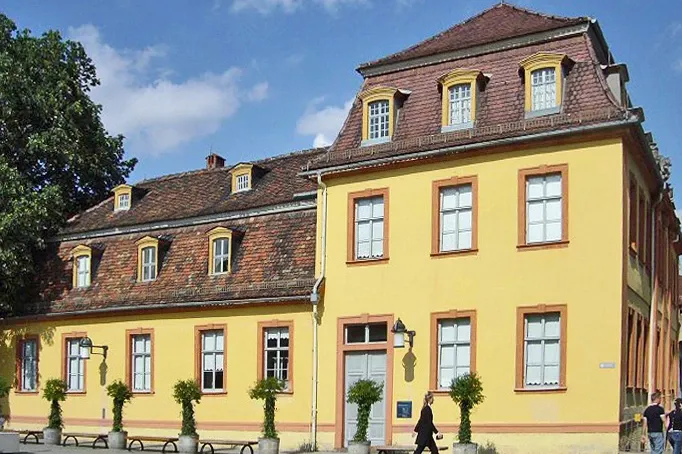
Wittumspalais
WeimarThe Wittumspalais is a museum located in Weimar, Germany. It is operated by the Klassik Stiftung Weimar, a foundation dedicated to preserving and promoting the cultural heritage of Weimar. The museum offers a glimpse into the historical and cultural life of the city.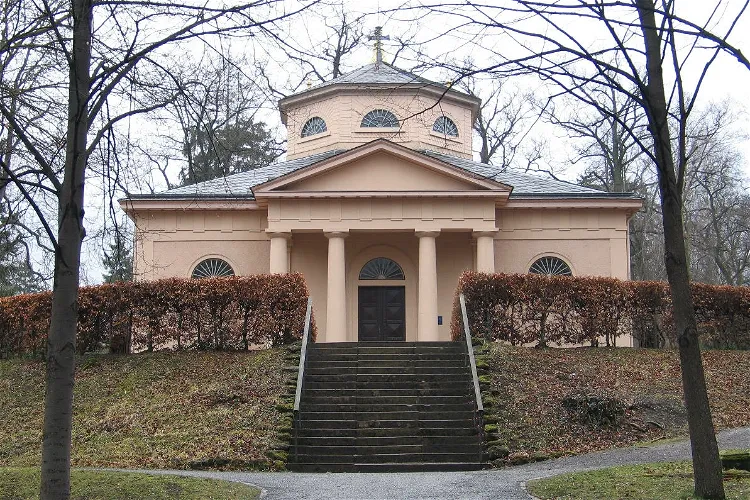
Classical Foundation Weimar
WeimarThe Klassik Stiftung Weimar, or Classical Foundation Weimar, is a major cultural institution in Germany. It boasts an impressive collection of over 20 museums, palaces, historic houses, and parks, along with a vast array of literary and art collections. This makes it a significant destination for those interested in exploring Germany's rich cultural history.
Goethe's garden house (
WeimarGoethe's Garden House, nestled in the Park an der Ilm in Weimar, served as the primary residence and workspace of the renowned German writer, Johann Wolfgang von Goethe. This historical site offers a unique insight into the life and work of one of Germany's most celebrated literary figures.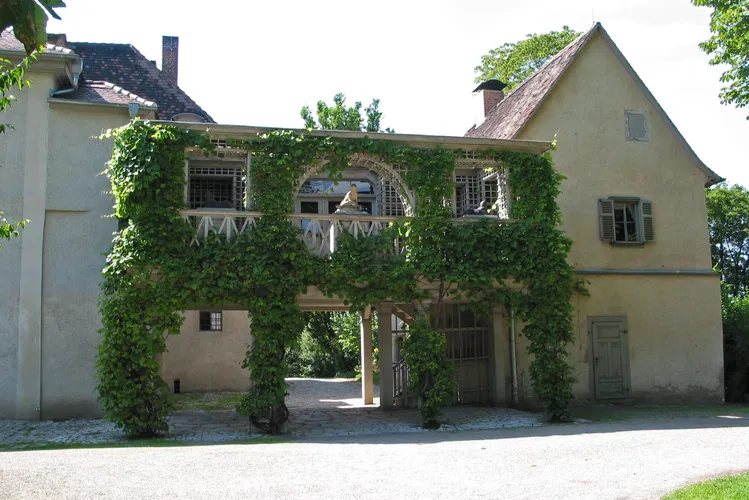
Tiefurt House
WeimarTiefurt Castle is a quaint castle situated on the banks of the Ilm River. It is nestled in the village of Tiefurt, which is approximately four kilometers away from the heart of the city of Weimar. This location makes it a peaceful retreat away from the bustling city center, yet close enough for easy access.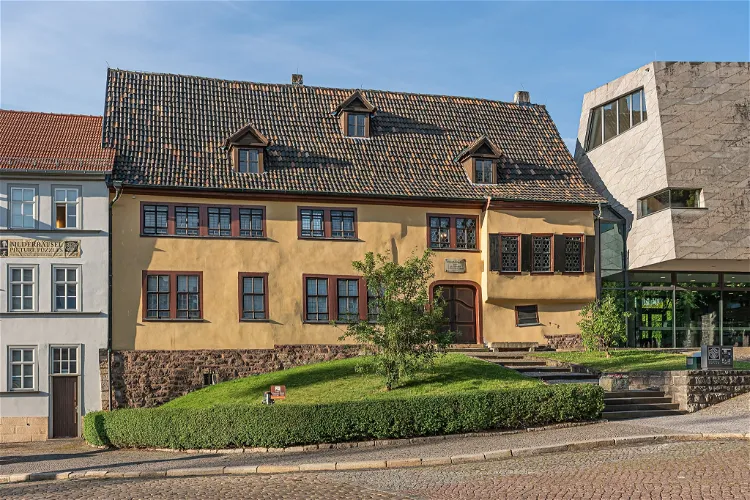
Bach House
EisenachThe Bach House in Eisenach, Germany, is a significant site for music enthusiasts and history buffs alike. This 15th-century manor-style house-museum is where the renowned composer Johann Sebastian Bach was born and spent part of his childhood. Visitors can step back in time and explore the environment that nurtured one of the world's greatest composers.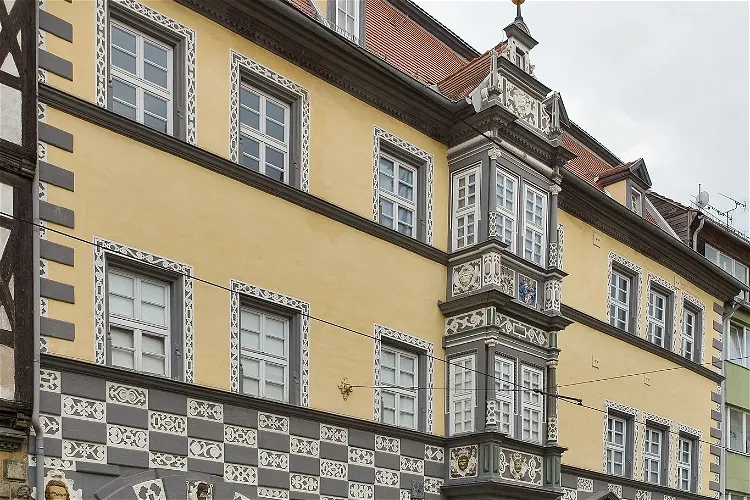
Stadtmuseum
ErfurtThe Stadtmuseum Erfurt is a museum dedicated to the history of the city of Erfurt. It is located in the Haus zum Stockfisch, a historic building in the city. The museum is an institution of the state capital Erfurt and is part of its history museums. It provides a comprehensive overview of the city's history, making it an ideal destination for those interested in learning more about Erfurt's past.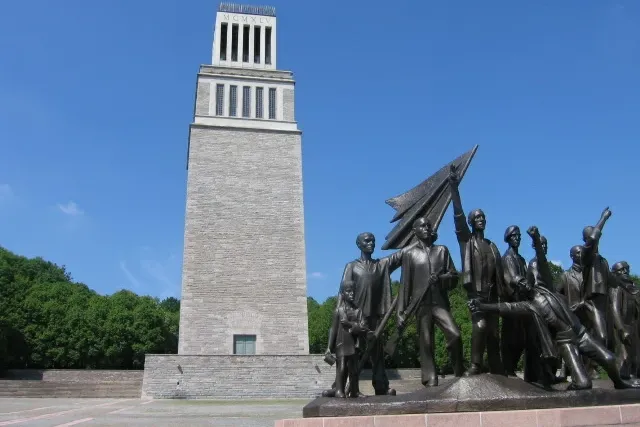
Buchenwald Memorial
WeimarDuring the operation of Buchenwald Concentration Camp, approximately 250,000 people from various European countries were detained and sent here. It is estimated that 56,000 people, including 11,000 Jews, were killed. This grim statistic underscores the scale of the human tragedy that unfolded at this site.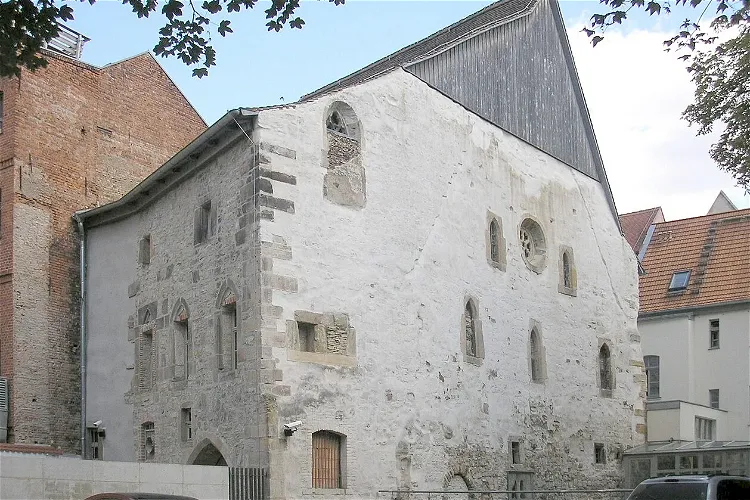
Old Synagogue
ErfurtThe Old Synagogue in Erfurt, with its age of over 900 years, holds the distinction of being the oldest preserved synagogue in Europe. This former synagogue is a testament to the rich Jewish history of the region and offers a unique glimpse into the past. Its location in the heart of Erfurt's old town adds to its historical charm and significance.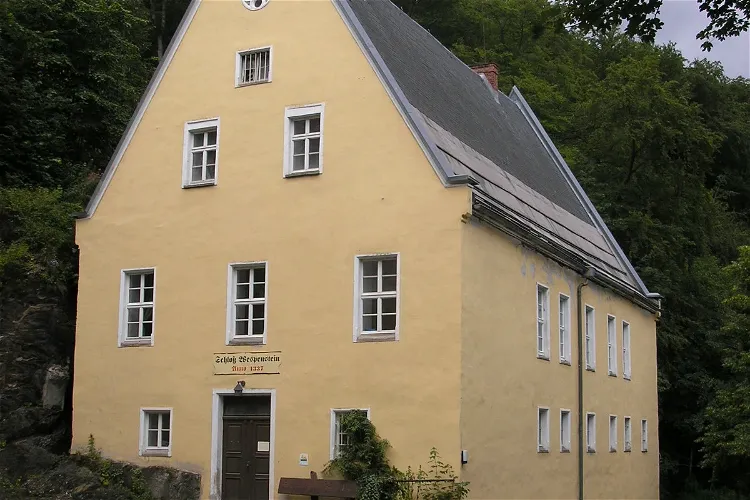
Schloss Wespenstein
GräfenthalSchloss Wespenstein is a historic castle located in the city of Gräfenthal in Thuringia, right on the border with Bavaria. The castle played a significant role in securing the pass section of a medieval army and trade route that stretched from Leipzig via Saalfeld to Nuremberg over the ridge of the Thuringian Slate Mountains. This strategic location underscores the historical importance of the castle.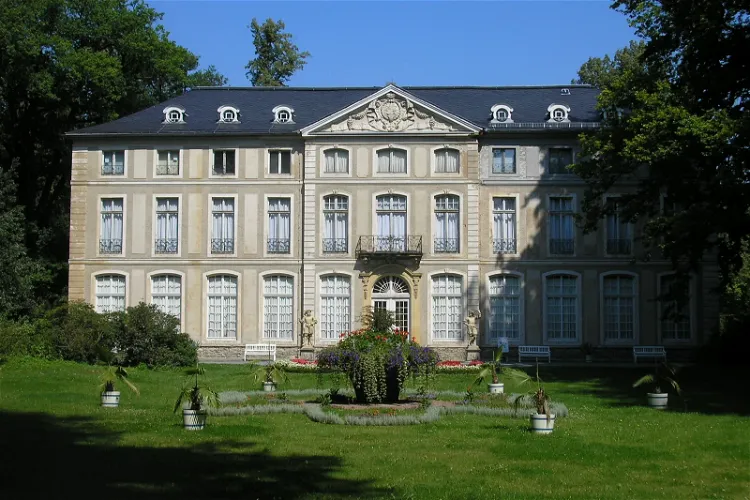
Sommerpalais
Greiz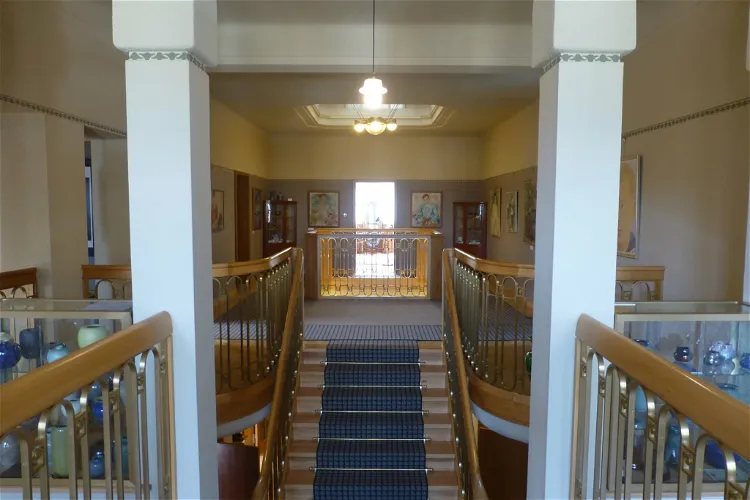
Van de Velde-Museum
GeraThe Schulenburg House, located at Straße des Friedens 120 in Gera, is a grand bourgeois villa designed and built by the renowned architect Henry van de Velde. This architectural masterpiece is under monument protection, preserving its historical and cultural significance.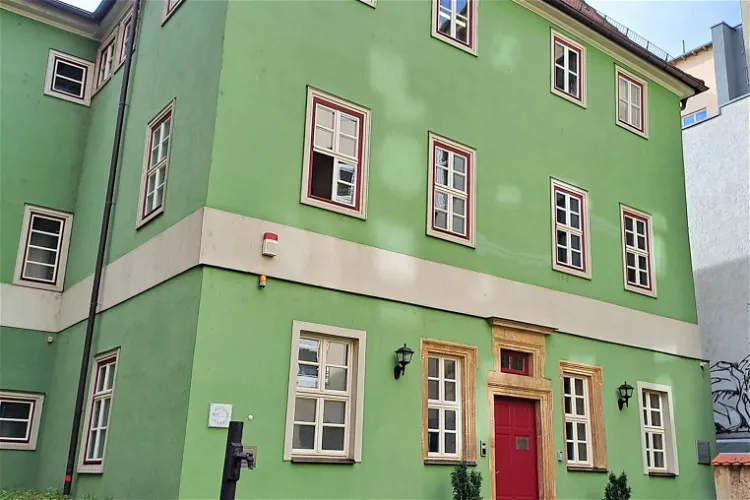
Romantikerhaus
JenaThe Romantikerhaus Jena is a museum that is committed to the research, preservation, and dissemination of the Jena Early Romanticism. It is a part of the Municipal Museums Jena and belongs to the JenaKultur. The museum is the only one in Jena under municipal sponsorship that exclusively commemorates the city's cultural bloom around 1800 and questions its significance for modern art and culture.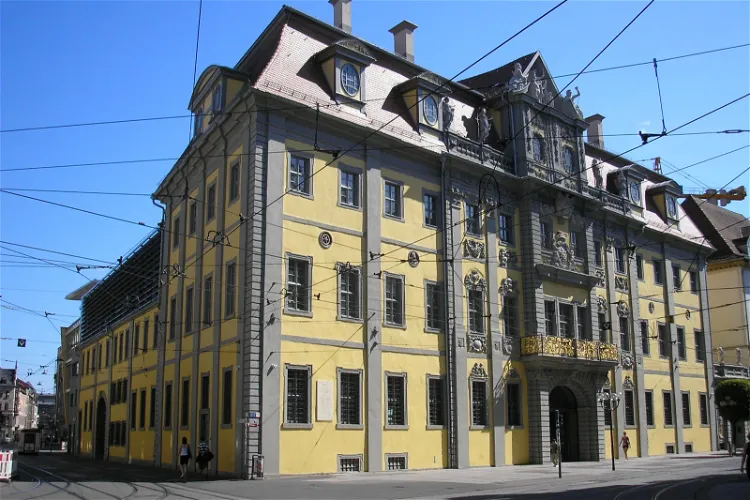
Angermuseum
ErfurtThe Angermuseum, an art museum in Erfurt, was opened on 27 June 1886. The museum is located in a historic building that once served as Erfurt's public weighing scales, where travelling merchants would bring their goods to be weighed for the payment of the city's customs duties.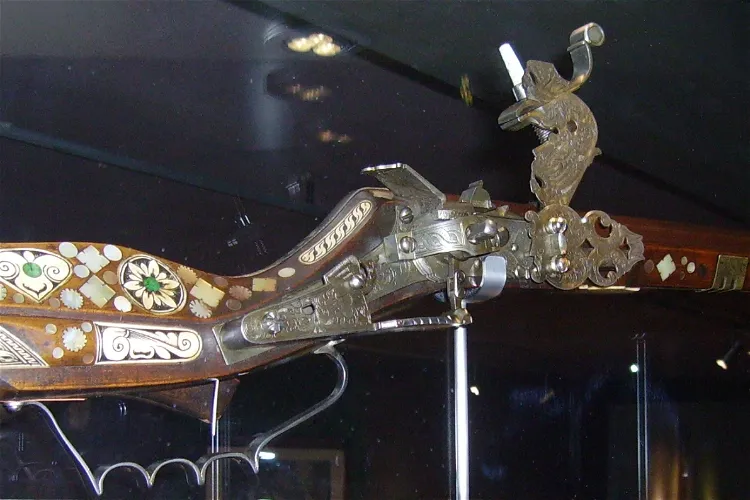
Waffenmuseum Suhl
SuhlThe Waffenmuseum Suhl is a specialty museum located in the historical Malthouse in the city of Suhl. It is dedicated to showcasing the technical development of handheld firearms. The museum is recognized as one of the most significant of its kind in Germany, making it a notable destination for those interested in the history and evolution of firearms.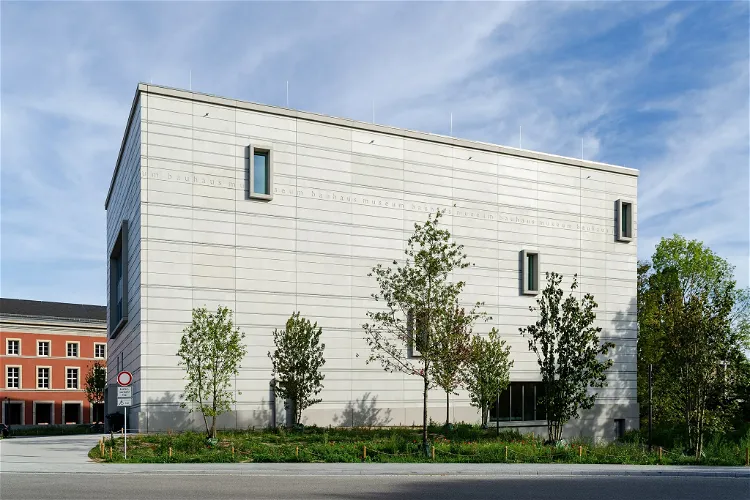
Bauhaus Museum Weimar
WeimarThe Bauhaus Museum Weimar, located in Weimar, Germany, is a museum dedicated to the Bauhaus design movement. This museum presents the Weimar collections of the State Bauhaus, which was founded in the town in 1919. It is a project of the Klassik Stiftung Weimar and is situated near the Weimarhallenpark.
Ernst-Haeckel-Haus
JenaThe Ernst-Haeckel-Haus in Jena is a museum dedicated to the life and work of Ernst Haeckel, a renowned zoologist, philosopher, and Darwinist. The museum is part of the Friedrich-Schiller-University Jena and is located in Haeckel's former residence. It serves as a tribute to Haeckel's significant contributions to the field of zoology and his influence on Darwinism.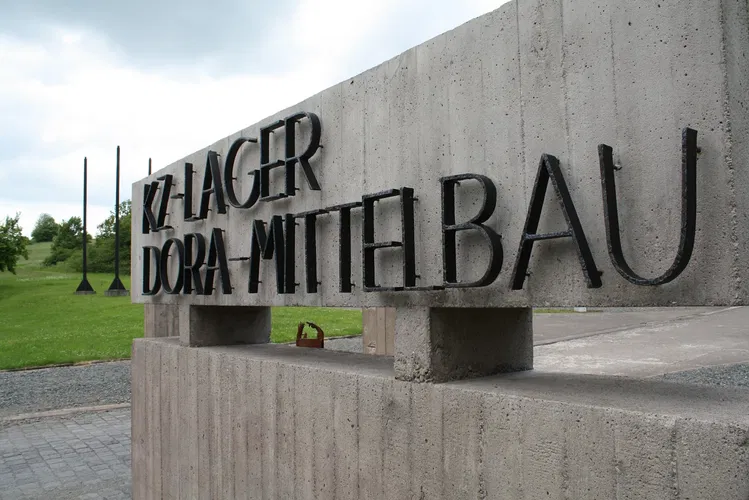
Mittelbau-Dora concentration camp
NordhausenMittelbau-Dora, sometimes referred to as the Mittelbau concentration camp, is a historical site located near Nordhausen, south of the Harz Mountains. Established in August 1943, this Nazi concentration camp played a significant role during World War II. Today, it serves as a reminder of the atrocities committed during this period and offers visitors an opportunity to learn about this dark chapter in history.
Schloss Brandenstein
RanisSchloss Brandenstein, also known as Burg Brandenstein, is a historic castle located in the Brandenstein district of the city of Ranis in the Saale-Orla district in Thuringia. The castle is situated on a Zechstein reef, a unique geological feature that adds to the charm and historical significance of the site.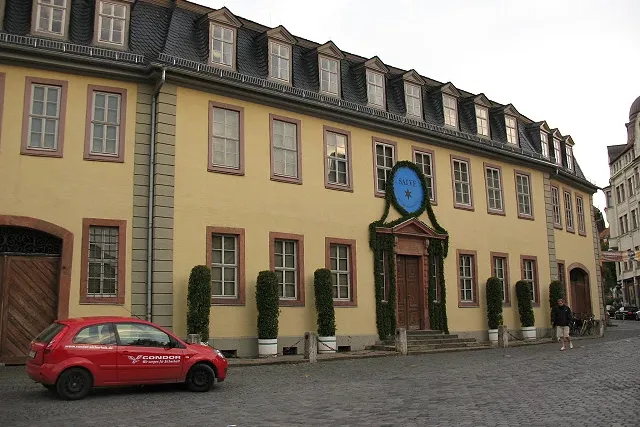
Goethe's House
WeimarGoethe's House, also known as the House on Frauenplan, is a museum located in Weimar. It is operated by the Klassik Stiftung Weimar and is situated in the residence where the renowned German writer Johann Wolfgang von Goethe lived and died. This historical site offers a unique insight into Goethe's life and work.
Tierpark Gera
GeraThe Thüringer Waldzoo Gera is home to a diverse range of wildlife, with nearly 900 animals from about 76 different species. Most of these species are native to the northern hemisphere, providing visitors with a unique opportunity to learn about and interact with animals they may not encounter elsewhere. From deer and bison to yaks and reindeer, the zoo offers a rich and varied animal experience.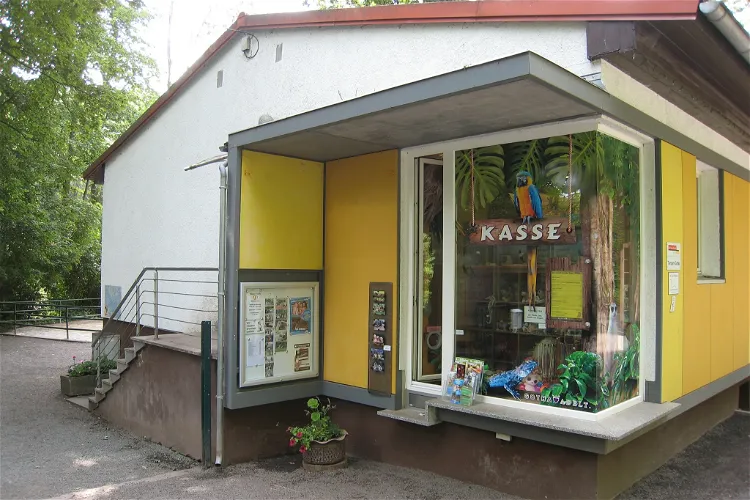
Tierpark Gotha
GothaTierpark Gotha is a small zoo nestled at the foot of the Kleinen Seeberg in the city of Gotha. It spans an area of approximately 6 hectares, providing ample space for visitors to explore and enjoy the diverse range of animals housed within its premises.
Inselzoo Altenburg
AltenburgInselzoo Altenburg is a unique zoo in Germany as it is the only one located on an island. The island is situated in the middle of the Großer Teich, a large pond, at the southern edge of Altenburg's old town. This unique location adds to the charm and appeal of the zoo, making it a distinctive destination for tourists.
Museum für Angewandte Kunst
GeraThe Museum für Angewandte Kunst (MAK) is a museum of applied arts located in Gera. It is one of the four municipal museums in the city, offering a unique insight into the world of applied arts. The museum is a significant cultural institution in Gera, contributing to the city's rich artistic heritage.
Tierpark Bad Liebenstein
Bad LiebensteinThe Tierpark Bad Liebenstein is a quaint zoo nestled at the foot of the Burgberg in the southern Thuringian town of Bad Liebenstein. This location offers a unique blend of natural beauty and wildlife, making it an ideal destination for nature lovers and families alike.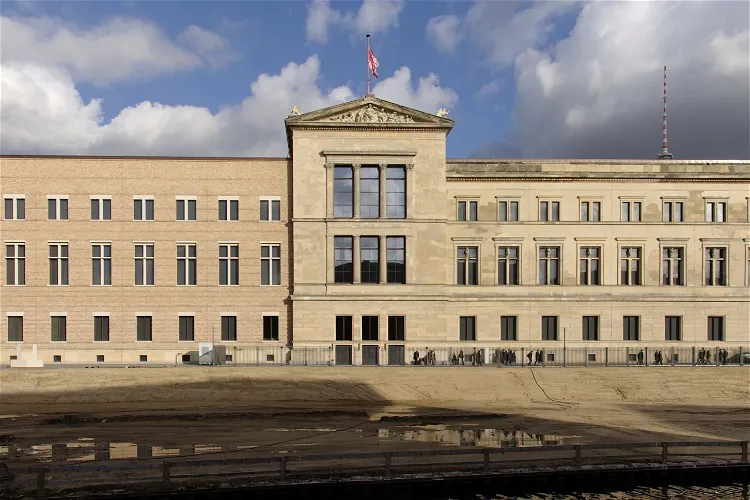
Neues Museum
WeimarThe Neues Museum Weimar, which was known as the Thuringian State Museum from 1919 to 1946 and as the Neues Museum Weimar from 1999 to 2020, is a museum located in Weimar that is dedicated to contemporary art. It was the first museum of its kind in the region of the former GDR. The museum building was constructed as the Großherzogliches Museum (Grand Ducal Museum) between 1864 and 1869 by the Prague architect Josef Zítek.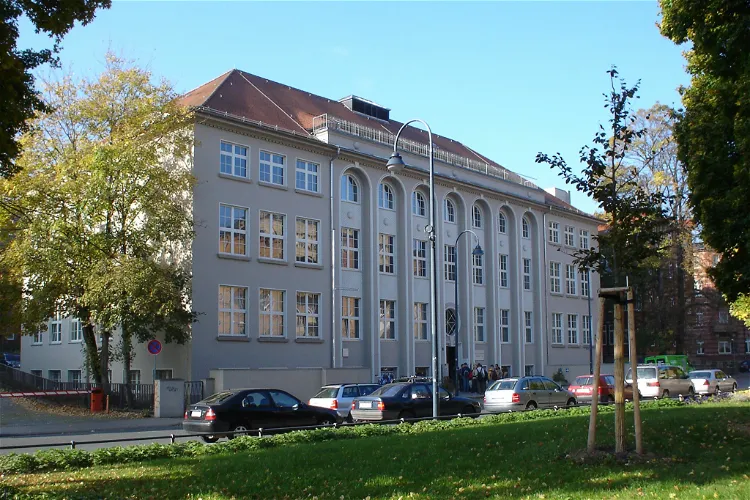
Optical Museum Jena
JenaThe Deutsches Optisches Museum Jena is a unique science and technology museum that showcases optical instruments spanning eight centuries. This extensive collection provides a comprehensive overview of the evolution of optical instruments, making it a fascinating destination for those interested in the history and development of technology.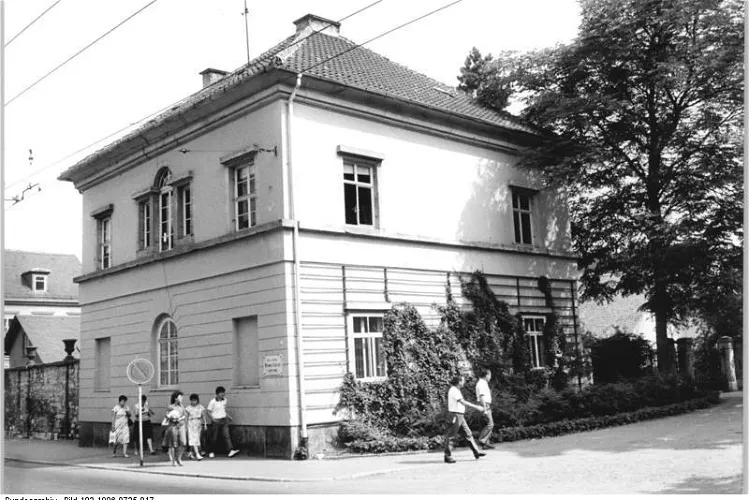
Liszt-Haus
WeimarThe Liszt-Haus is a museum located in Weimar, in the German state of Thuringia. It is dedicated to the life and works of the renowned Hungarian composer, Franz Liszt, who resided in this house. The museum offers a unique insight into the life of the composer, making it a significant destination for music enthusiasts and history buffs alike.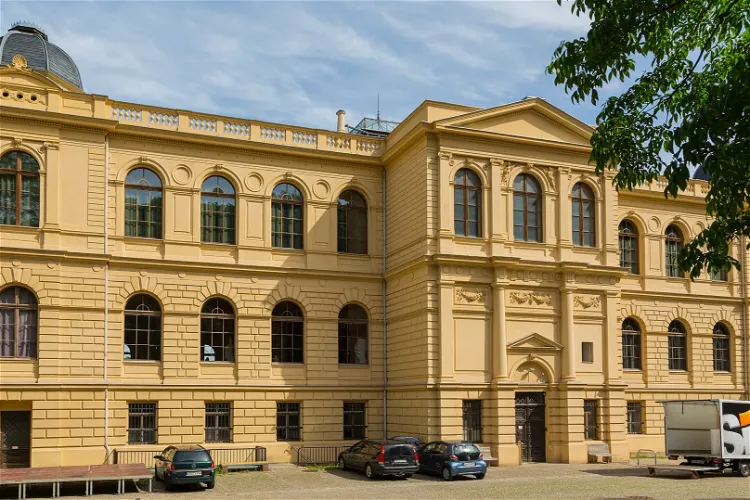
Lindenau-Museum
AltenburgThe Lindenau-Museum is renowned for its extensive collection of Italian paintings from the late Gothic and early Renaissance periods, dating from the 13th to the 15th centuries. This collection is one of the largest of its kind outside Italy, making the museum a significant destination for art enthusiasts and historians alike.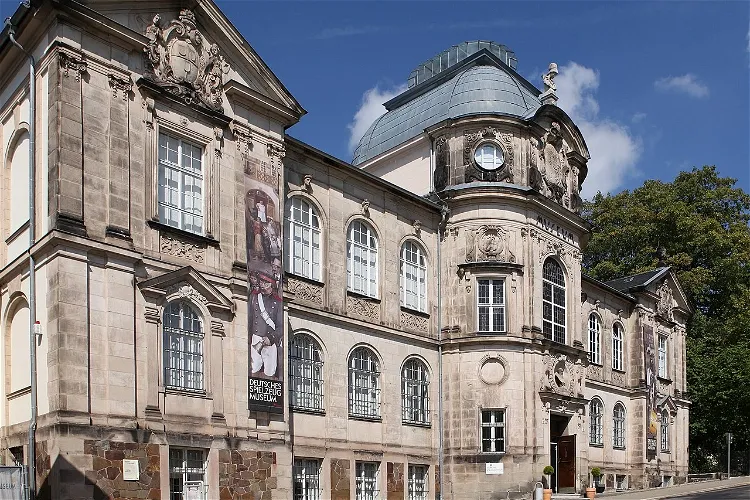
Deutsches Spielzeugmuseum
SonnebergThe Deutsches Spielzeugmuseum, located in Sonneberg, Thuringia, was established in 1901 by teacher Paul Kuntze. This museum, being the oldest toy museum in Germany, holds a significant place in the country's cultural and historical landscape.
Phyletic Museum Jena
JenaThe Phyletic Museum in Jena, founded by Ernst Haeckel, is a unique institution dedicated to the study of phylogenesis. This museum offers a deep dive into the evolutionary history of multicellular animals, including humans. It's a place where science and art meet, aiming to convey the development of life through its exhibits.- 33
Heimatmuseum Ingersleben
Ingersleben 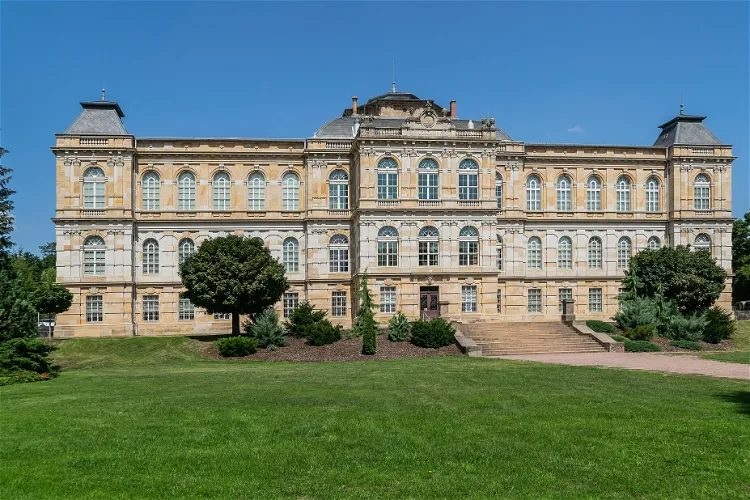
Herzogliches Museum
GothaThe Herzogliches Museum Gotha is a 19th-century museum building located opposite Schloss Friedenstein. It is designed in the style of the Neo-Renaissance, offering a unique architectural experience for visitors. The museum's location and design make it a significant landmark in the area.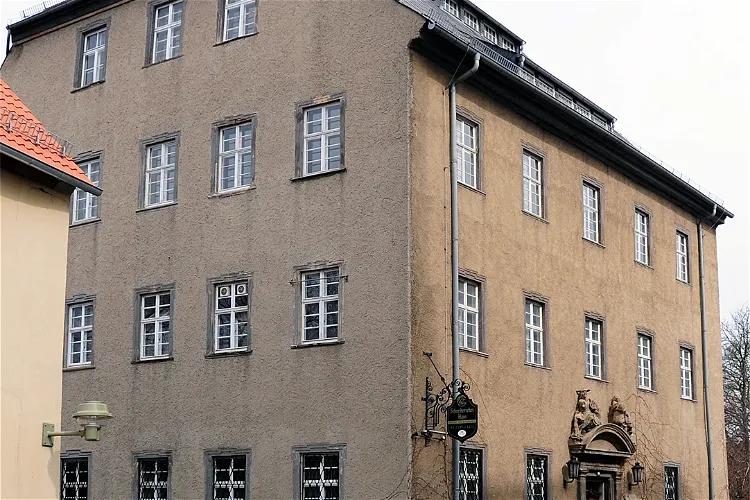
Museum für Naturkunde
GeraThe Museum für Naturkunde in Gera is one of the four city museums. It is situated in the Schreibersches Haus on the Nicolaiberg in the eastern part of the old town, adjacent to the Salvatorkirche. This location is steeped in history and offers a unique setting for the museum.
Mauritianum
AltenburgThe Mauritianum is a natural history museum situated in Altenburg, Thuringia. It is a place where visitors can explore a wide range of natural history exhibits. The museum is named after Prince Moritz of Saxony-Altenburg, the president of the Natural Research Society of Osterland who passed away in 1907.- 37
Stadtpark
Nordhausen 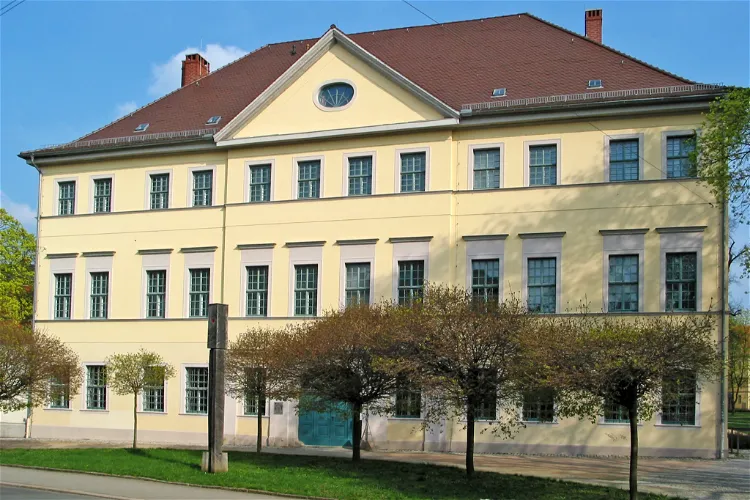
Museum of Prehistory and Early History of Thuringia
WeimarThe Museum für Ur- und Frühgeschichte Thüringens in Weimar is a unique institution that combines a museum with a 1000 m² exhibition area and the Thuringian State Office for Monument Conservation and Archaeology. This combination allows visitors to explore a wide range of exhibits and learn about the archaeological and historical significance of the region.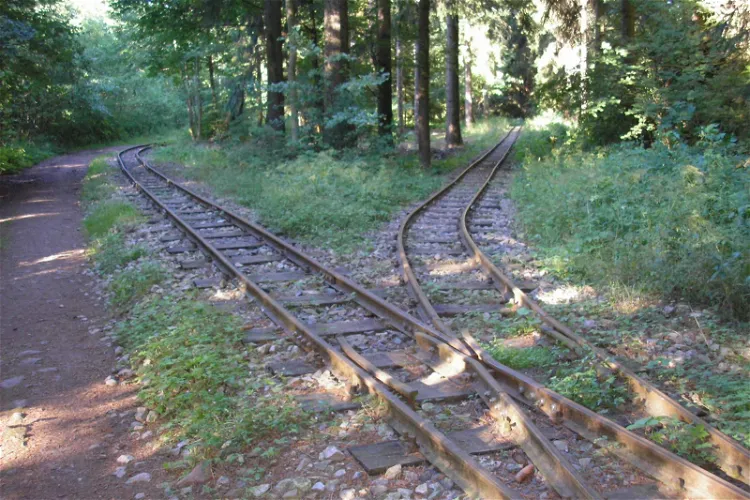
Schaubergwerk Volle Rose
IlmenauThe Schaubergwerk "Volle Rose" is a show mine situated in the Schortetal near Ilmenau in Thuringia. This location offers a unique opportunity for visitors to explore the rich mining history of the region. The mine is nestled in the valley of the Schorte, south of Ilmenau in the Thuringian Forest, providing a picturesque setting for an educational outing.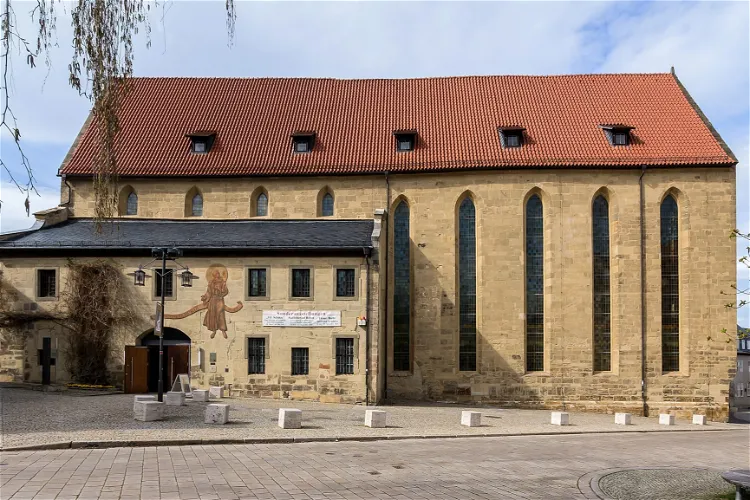
Stadtmuseum Saalfeld im ehemaligen Franziskanerkloster
Saalfeld/SaaleThe Stadtmuseum Saalfeld is housed in the former Saalfeld Franciscan monastery, encompassing the entire building complex. This means that the historical architecture of the former monastery, including its cloisters and Gothic roof truss, forms part of the exhibition. This unique setting provides visitors with a rich historical context for the exhibits on display.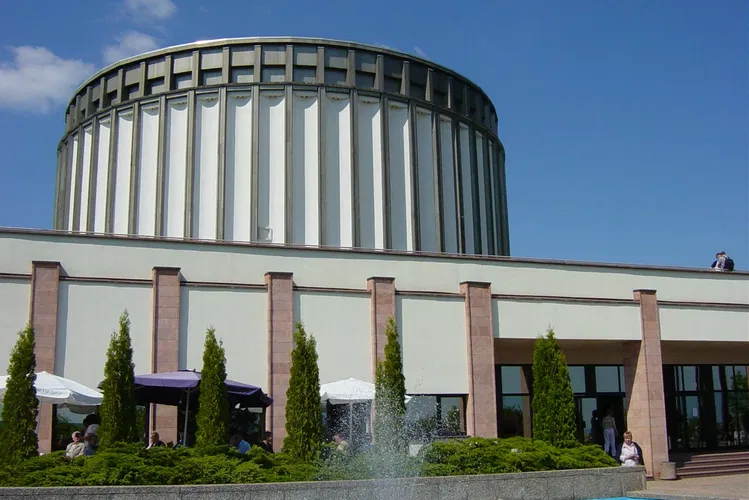
Early Bourgeois Revolution in Germany
Bad Frankenhausen/KyffhäuserThe Panorama Museum in Bad Frankenhausen, Thuringia, is home to a monumental painting titled 'Early Bourgeois Revolution in Germany', also known as the 'Peasants' War Panorama'. This impressive work of art was created by the East German painter Werner Tübke over a period of 11 years, from 1976 to 1987. The painting, which measures 14 metres by 123 metres, is the main attraction of the museum.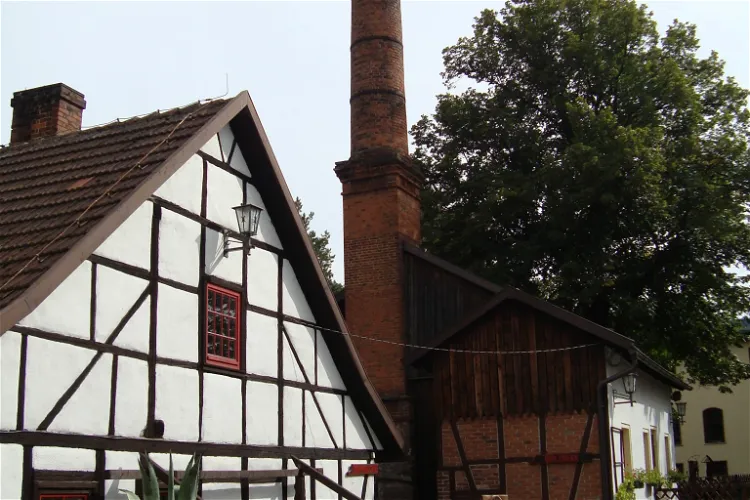
Tobiashammer
OhrdrufThe Tobiashammer is a significant historical site located in Ohrdruf, Thuringia, Germany. Dating back to 1482, this large, water-driven hammer mill has been preserved as an industrial monument and museum since 1983. It offers visitors a unique opportunity to explore the rich industrial history of the region.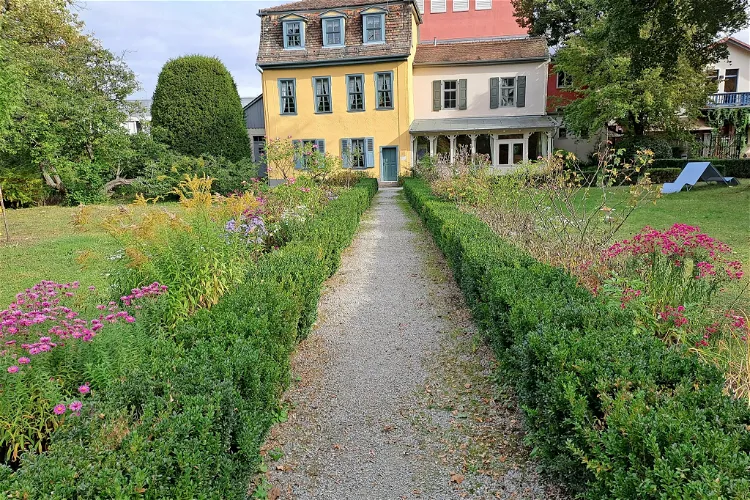
Schiller's Garden House
JenaSchiller's Garden House in Jena is a significant historical site, as it is one of only two preserved residences of the renowned German poet, philosopher, physician, historian, and playwright Friedrich Schiller. Schiller resided here with his family during the summers of 1797 to 1799. This period was a productive time for Schiller, during which he penned some of his most important works.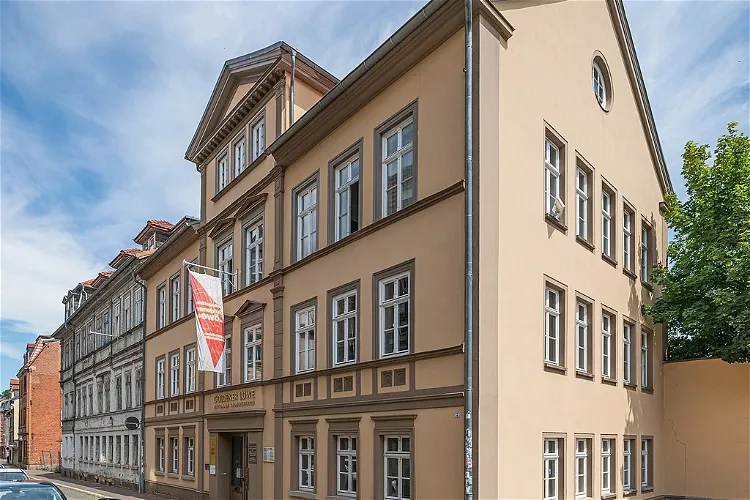
Gedenkstätte "Goldener Löwe"
EisenachThe Gedenkstätte Goldener Löwe is a significant historical site in Eisenach, Germany. It commemorates the founding congress of the Social Democratic Workers' Party (SDAP) in 1869. This party later evolved into the Social Democratic Party of Germany (SPD), which is still active today. The memorial is located in the former Golden Lion inn, a key location in the early history of German social democracy.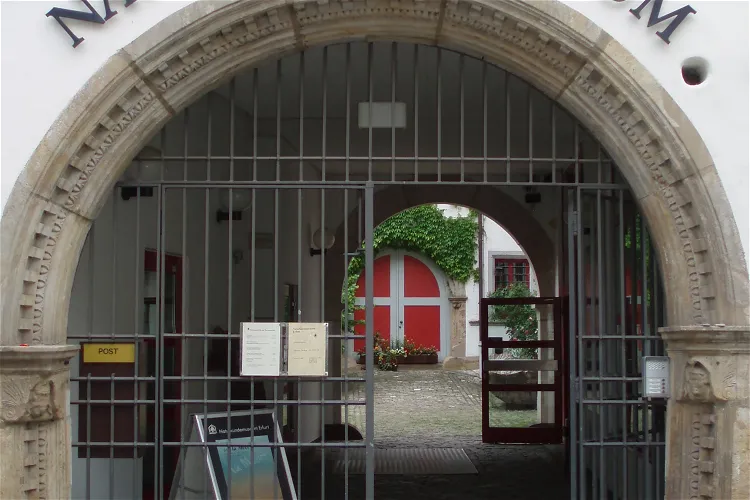
Natural History Museum of Erfurt
ErfurtThe Natural History Museum of Erfurt is conveniently located in the city center of Erfurt. It is housed in a building that was once a woad warehouse. This central location makes it easily accessible for tourists visiting the city. The building itself, a former warehouse, adds a unique historical charm to the museum experience.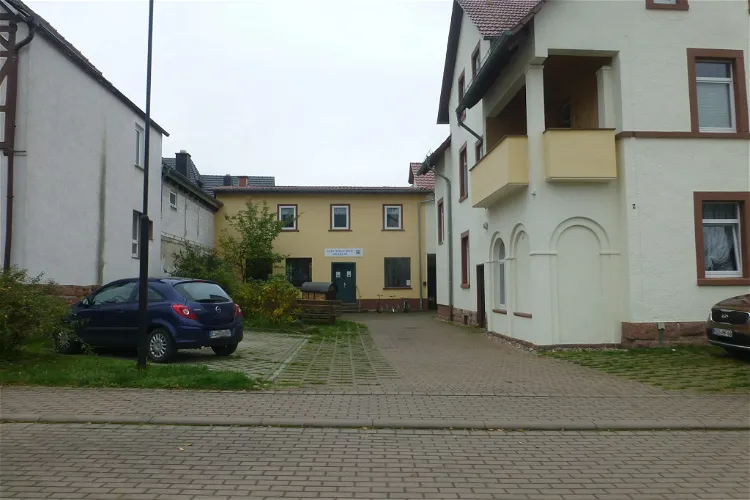
Stockmachermuseum
LindewerraThe Stockmachermuseum is situated in the quaint village of Lindewerra, nestled in the Eichsfeld district of northwest Thuringia. This location is notable as it sits directly on the state border with the Hessian Werra-Meißner-Kreis, offering a unique blend of cultural influences.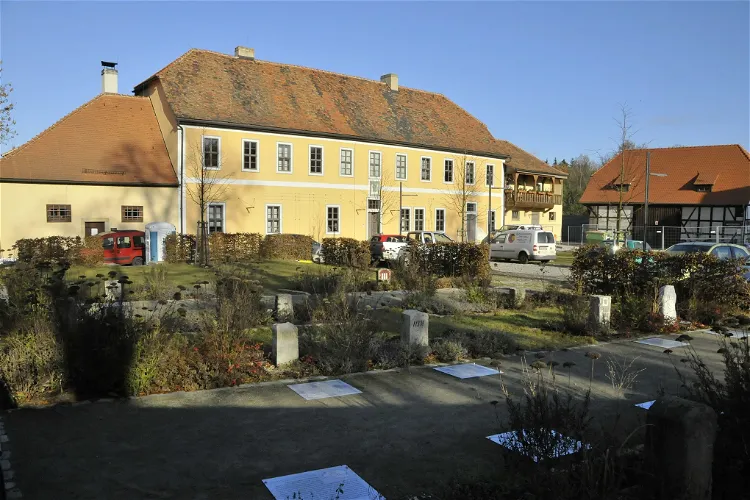
Lapidarium Willrode
ErfurtThe Lapidarium Willrode is a unique collection of historical border and boundary stones. It is situated at the Forsthaus Willrode, which is located near the Thuringian state capital, Erfurt. This collection provides a fascinating insight into the history of the region, with each stone marking the outer boundaries of historical territories.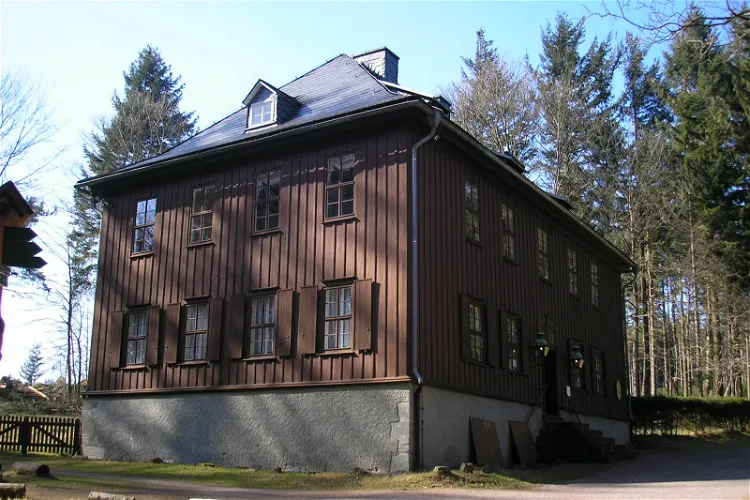
Jagdhaus Gabelbach
IlmenauThe Jagdhaus Gabelbach is a historical hunting lodge nestled in the Thuringian Forest, not far from Ilmenau. Constructed in 1783, this late Baroque structure now serves as a museum dedicated to the life and works of Johann Wolfgang von Goethe, the renowned German writer and statesman. The museum is easily accessible via the road from Ilmenau to Frauenwald and Neustadt am Rennsteig.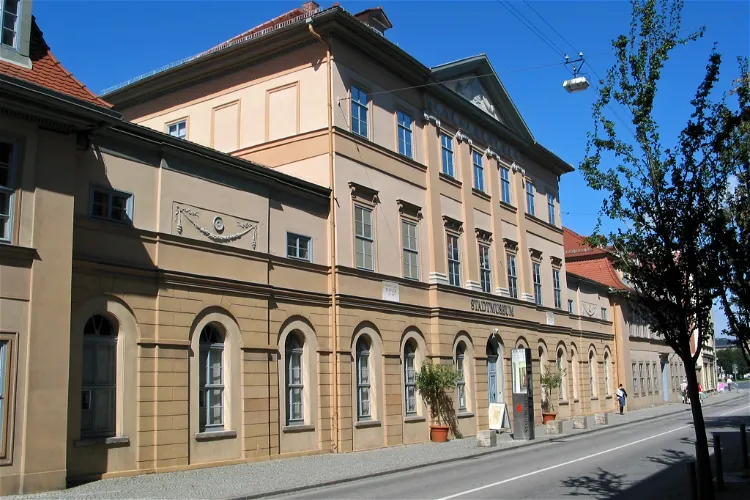
Stadtmuseum Weimar
WeimarThe Stadtmuseum Weimar, located at Karl Liebknecht-Straße 5, holds the distinction of being the first city museum in Thuringia. This museum is housed in a classicist residential and commercial building constructed between 1780 and 1803. The building is named after its builder, Friedrich Justin Bertuch, a prominent entrepreneur, writer, and publisher during Goethe's time in Weimar.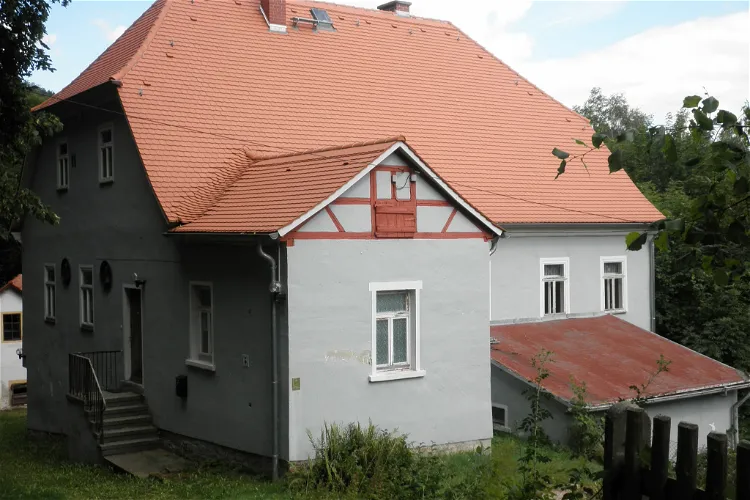
BREHMS WELT
UnterrenthendorfThe Museum "Brehm's World - Animals and Humans", formerly known as the Brehm Memorial, is located in Renthendorf, Thuringia, Germany. This memorial museum is dedicated to the two renowned naturalists, Christian Ludwig Brehm and Alfred Brehm. It offers a unique opportunity to delve into the lives and works of these two significant figures in the field of natural science.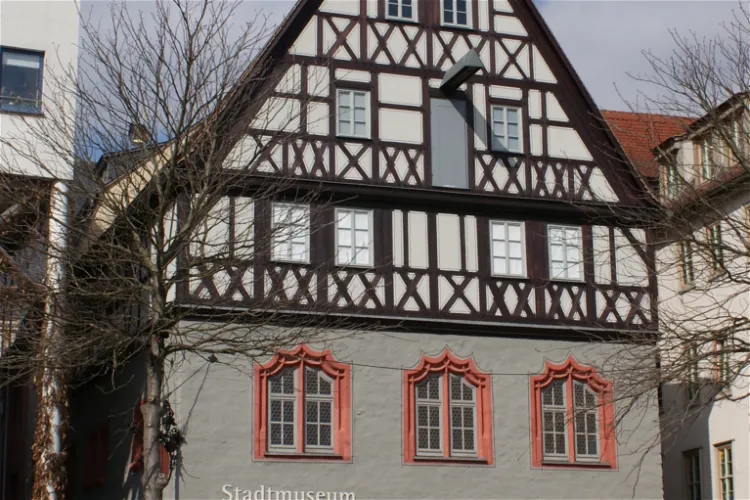
Stadtmuseum Jena
JenaThe Stadtmuseum Jena, situated in the Göhre on the northern side of the historic Jena market square, is a place of rich history. The foundations of the Göhre, where the museum is housed, date back to the 13th century, adding a layer of historical depth to your visit.
Exotarium Oberhof
OberhofThe Exotarium Oberhof, situated in the Thuringian city of Oberhof, is known to be the largest Aqua-Terra Zoo in Central Germany. This makes it a significant destination for tourists interested in exploring a diverse range of aquatic and terrestrial species in one place.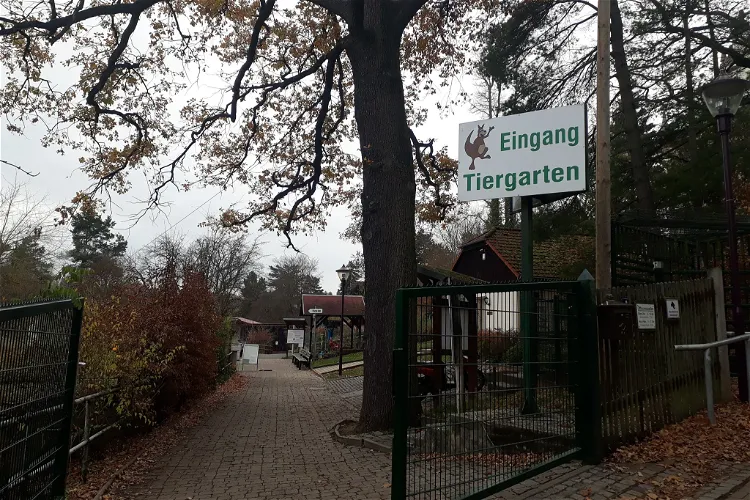
Tiergarten Eisenberg
EisenbergThe Tiergarten Eisenberg is a zoo located in Eisenberg, Thuringia. It covers an area of 2.5 hectares and is home to approximately 720 animals of 44 different species. The zoo showcases small domestic breeds, wildlife from Australia and African mountain regions, as well as native forest dwellers.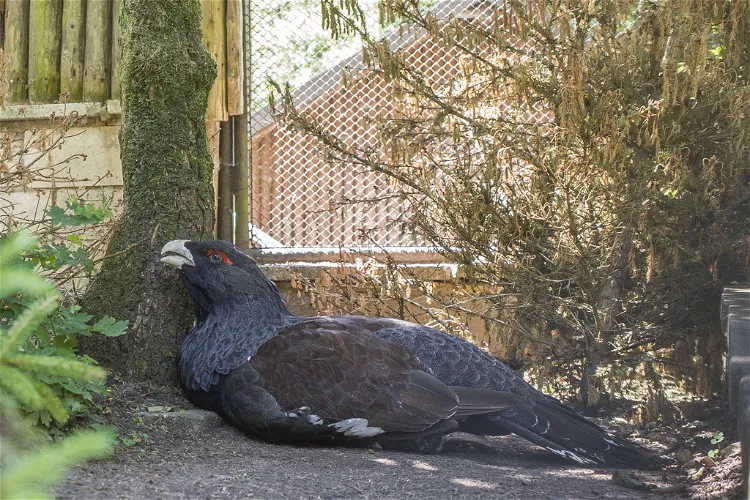
Suhl Zoo
SuhlSuhl Zoo, situated in the eastern part of the city of Suhl in the Thuringian Forest, is a unique destination for animal lovers. The zoo specializes in the keeping of endangered European wild and domestic animals, providing a safe haven for these species and an opportunity for visitors to learn about their conservation.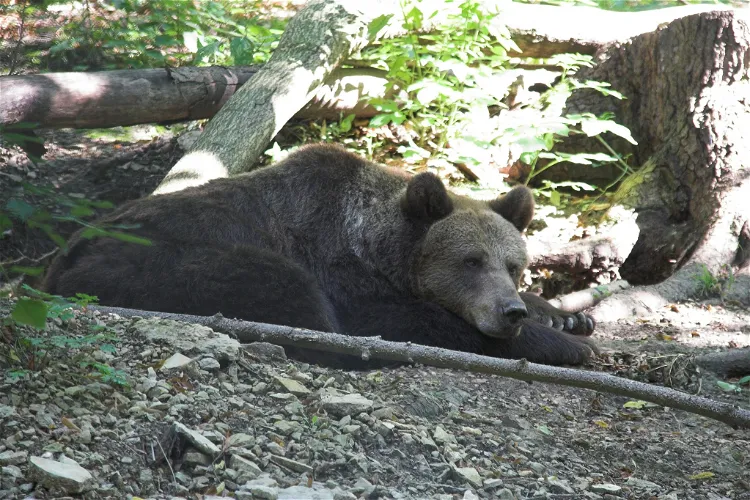
Alternativer Bärenpark Worbis
Leinefelde-WorbisThe Alternative Bärenpark Worbis is a free-range facility located on the outskirts of Leinefelde-Worbis in Thuringia's Eichsfeld. The park is home to bears, wolves, and various other animal species. It was established in 1996 by the initiative of the 'Aktion Bärenhilfswerk' on the site of the former municipal zoo.
Thüringer Zoopark Erfurt
ErfurtThe Thüringer Zoopark Erfurt, located in the north of the city on the Roter Berg, is the largest zoological garden in Thuringia. From this location, visitors can enjoy views of newer parts of Erfurt, a city with a history spanning over 1250 years.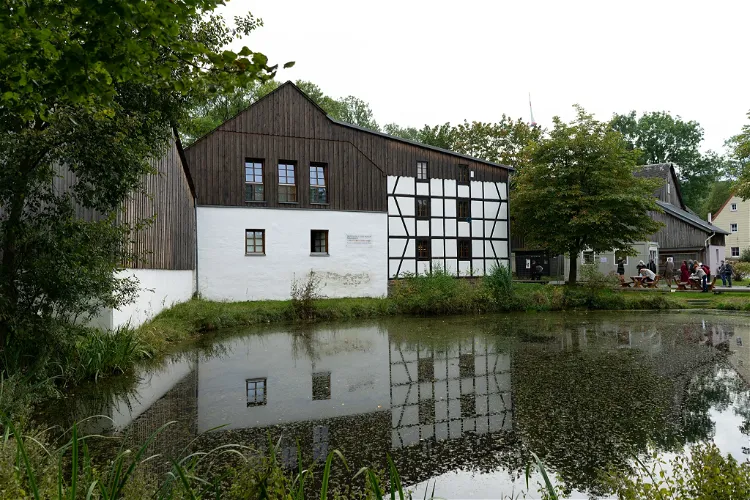
German-German Museum Mödlareuth
GebersreuthThe German-German Museum Mödlareuth is situated in the town of Mödlareuth, which was once divided by the inner German border. This unique location provides a tangible historical context for the museum's exhibits, making it a fascinating destination for those interested in the history of Germany's division and reunification.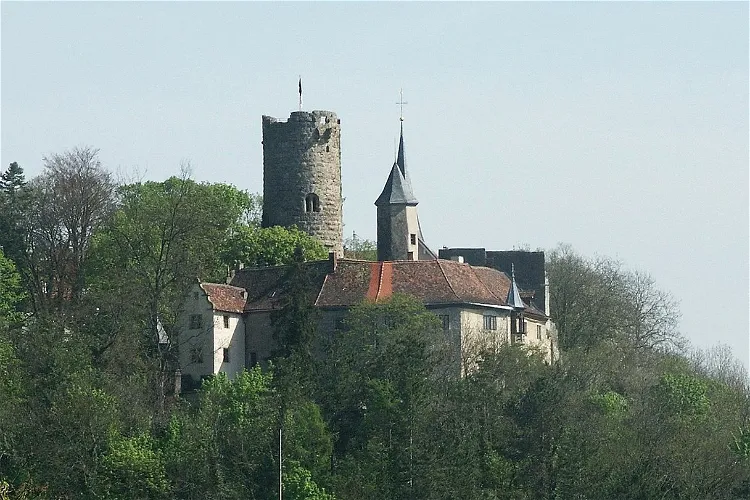
Krautheim Castle
KrautheimBurg Krautheim, also known as Krautheim Castle, was constructed in 1213 by Wolfrad I. von Krautheim. It is located on a mountain spur above the town of Krautheim in the Hohenlohe district in Baden-Württemberg, Germany. The castle's strategic location offers a panoramic view of the surrounding area, making it a fascinating destination for tourists.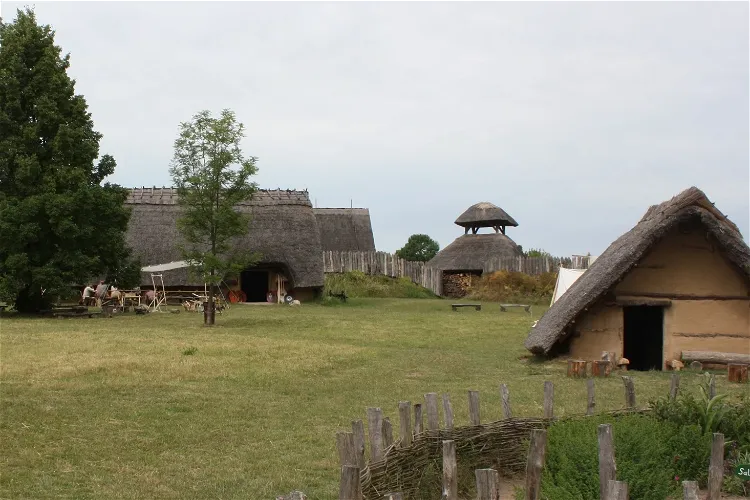
Funkenburg Westgreußen
WestgreußenThe Funkenburg Archaeological Open-Air Museum is a unique reconstruction of a Germanic fortified settlement. It is situated on a flat mountain spur on the outskirts of Westgreußen. This location offers a unique insight into the life and culture of the Germanic people who lived there between 200 BC and 50 AD.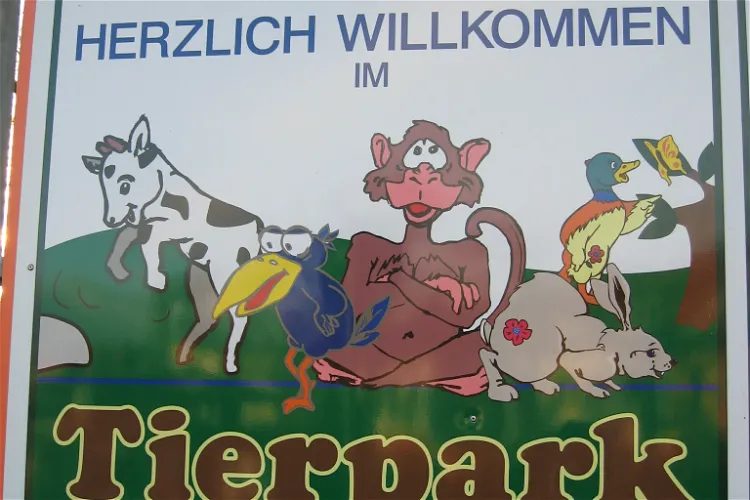
Tierpark Fasanerie
Arnstadt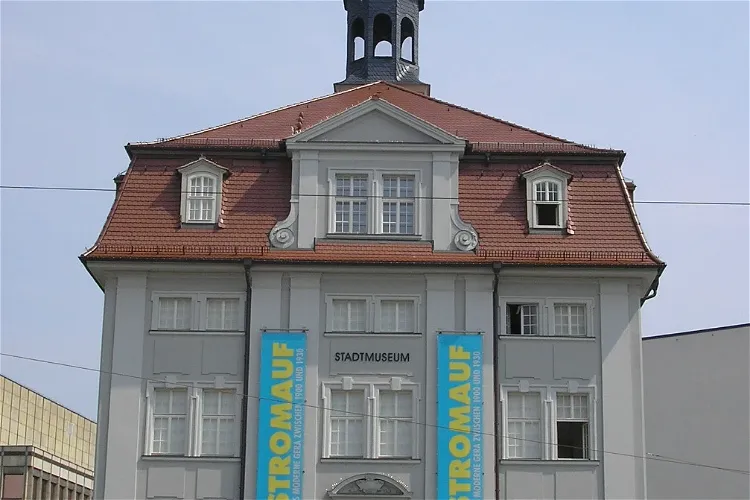
Stadtmuseum
GeraThe Stadtmuseum in Gera is one of four city museums, with a primary focus on the history of the city. It provides a comprehensive overview of the city's history, from its early origins to its development as a residence city of the Reuss. The museum's collections have been gradually built up and are divided into natural history and cultural history sections.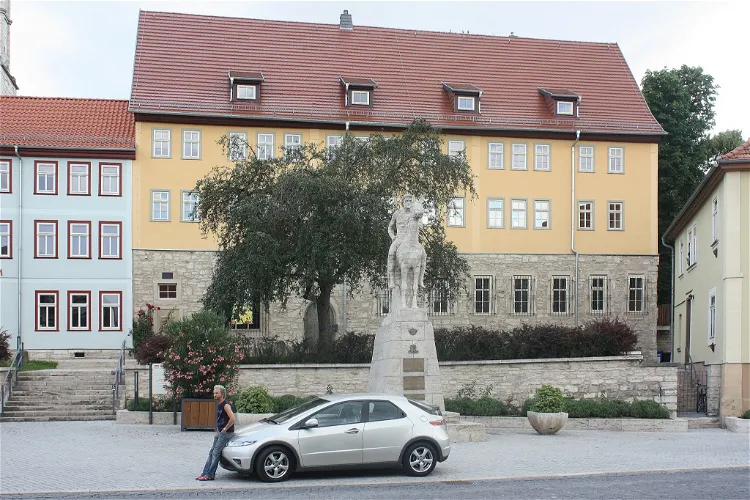
Stadtmuseum im Augustinerkloster
Bad Langensalza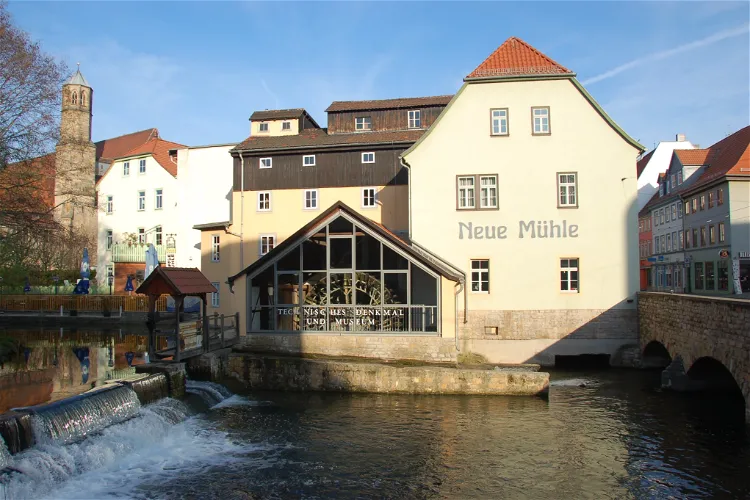
Neue Mühle
ErfurtThe Neue Mühle is a technical museum located at the Schlösserbrücke in Erfurt, the capital of Thuringia. The museum is situated on a tributary of the small river Gera, which powers the mill's hydroelectric plant. This unique location not only provides a picturesque setting but also demonstrates the historical use of water power in the region.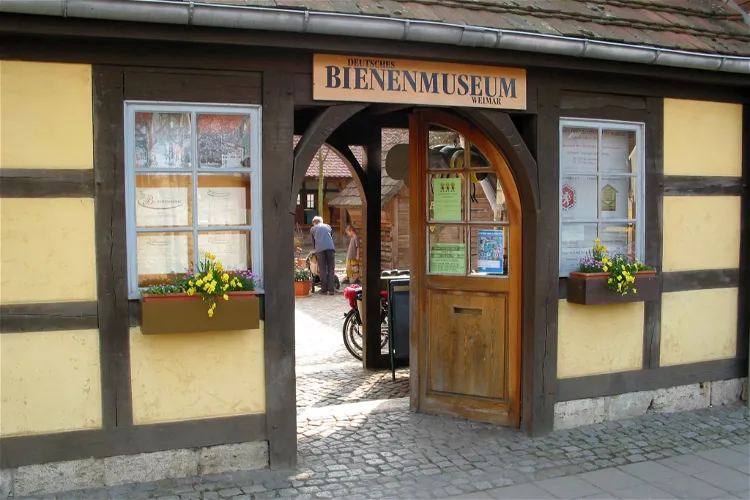
German Bee Museum Weimar
WeimarThe German Bee Museum Weimar, founded in 1907 by Ferdinand Gerstung, offers a deep dive into the world of beekeeping. Gerstung, also known as the 'Bee Father', established the museum to educate and inform about the various aspects of beekeeping. The museum's rich history adds to its charm and appeal for visitors.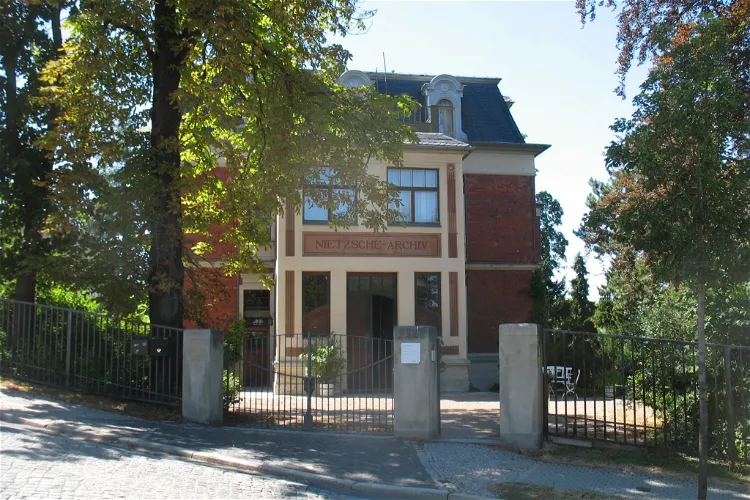
Nietzsche Archive
WeimarThe Nietzsche Archive, established in 1894, is a significant institution dedicated to preserving and documenting the life and work of the renowned philosopher Friedrich Nietzsche. It was the first organization of its kind, focusing solely on Nietzsche's contributions. The archive was initially located in Naumburg, Germany, before finding a permanent home in Weimar.
Bach-Stammhaus Wechmar
Wechmar
Historicum Zinnfiguremuseum
Schmalkalden
SCHOTT Villa
Jena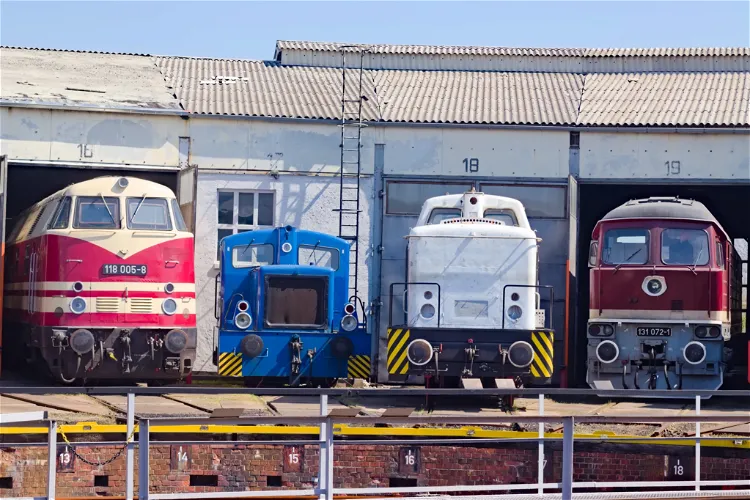
Förderverein Bahnbetriebswerk Arnstadt
ArnstadtThe Bahnbetriebswerk Arnstadt is a railway museum located in Arnstadt, Thuringia. Since 1992, it has been home to steam locomotives of the former Reichsbahndirektion Erfurt. This museum offers a unique opportunity to explore the history of steam locomotives and the railway industry in Germany.
Stadtmuseum in der Beschußanstalt
Zella-MehlisThe Stadtmuseum in Zella-Mehlis is housed in the building of the former Beschussanstalt, a facility where firearms were tested. This location adds a unique historical context to the museum, as it reflects the city's long-standing tradition in the weapons industry. Visitors can explore the museum within this historical building, which provides a tangible connection to the city's past.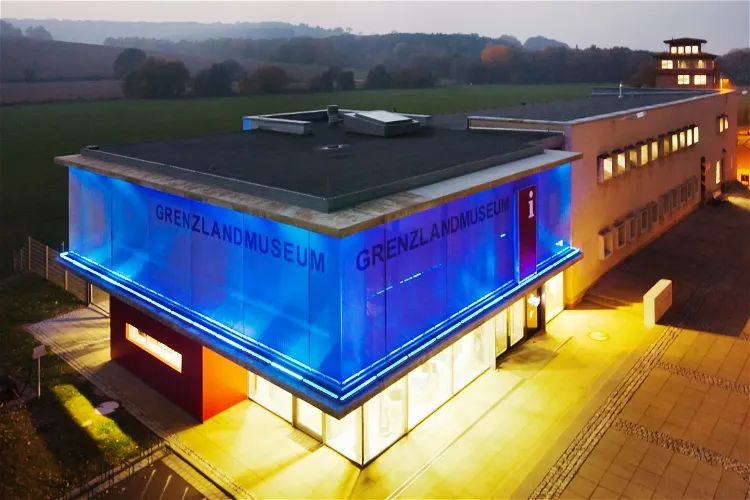
Grenzlandmuseum Eichsfeld
TeistungenThe Borderland Museum Eichsfeld is a historical institution situated in Central Germany. It is located at the former inner-German border that once separated East and West Germany. The museum's focus is on the Cold War era and the specific division of Germany during this time.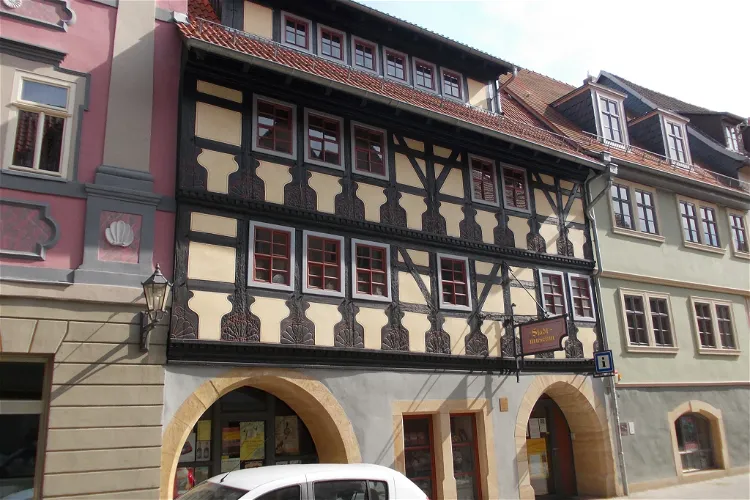
Stadtmuseum Kahla
Kahla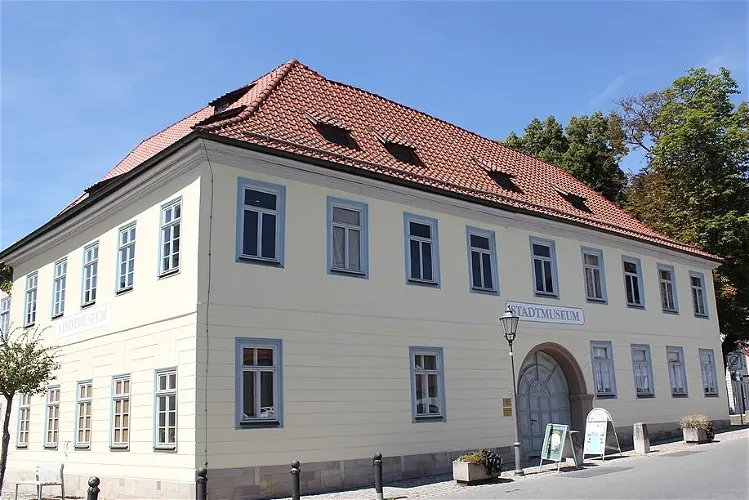
Stadtmuseum Hildburghausen
HildburghausenThe Stadtmuseum Hildburghausen is a museum that focuses on the city history of Hildburghausen. It provides a comprehensive overview of the city's past, making it an ideal destination for those interested in learning more about the local history.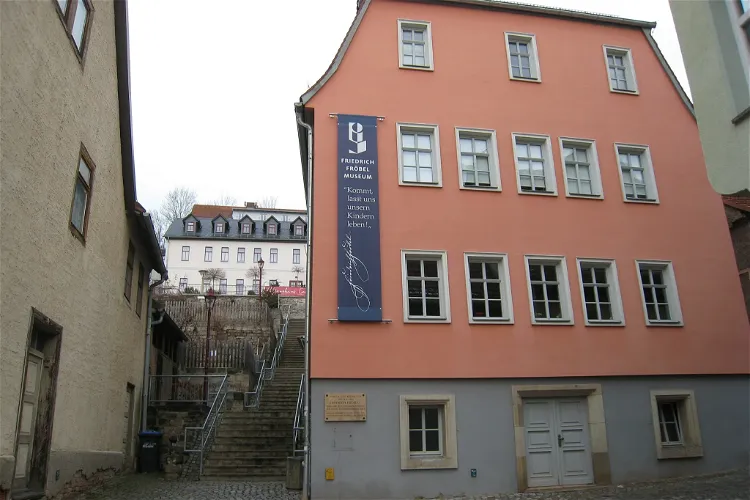
Friedrich-Fröbel-Museum
Bad BlankenburgThe Friedrich-Fröbel-Museum in Bad Blankenburg is a significant site in the history of early childhood education. It is housed in the very building where Friedrich Fröbel, often referred to as the 'founder' of the kindergarten, opened his first 'play and employment institution' in 1839/40. This institution would later evolve into what we now know as the kindergarten. The museum has been located in this building since 1982, making it a place of historical significance for those interested in the origins of early childhood education.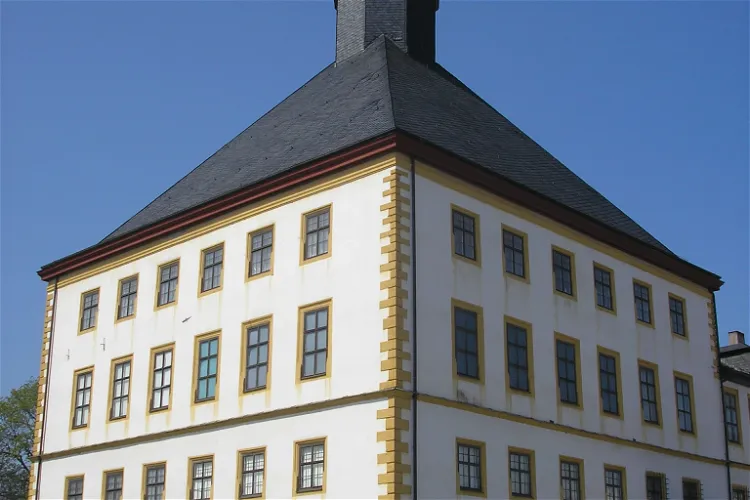
Museum der Natur Gotha
GothaThe Museum der Natur Gotha, located in the city of Gotha, is one of the four museums under the Stiftung Schloss Friedenstein Gotha. It is home to a wide range of geological, paleontological, and zoological collections. These collections have a rich history, with some dating back to the 17th century. The museum provides a unique opportunity for visitors to explore the natural history of the region and beyond.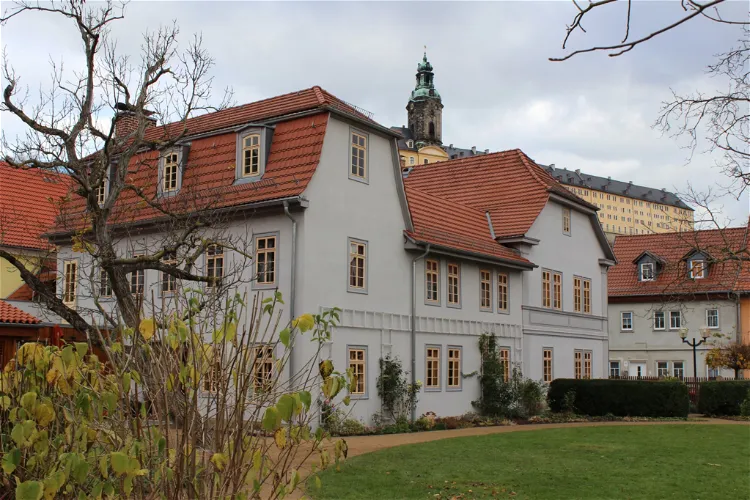
Schillerhaus Rudolstadt
RudolstadtThe Schillerhaus in Rudolstadt is a literature museum dedicated to the renowned German poet, philosopher, physician, historian, and playwright Friedrich Schiller. It is located in the former residence of the von Lengefeld family, also known as the Beulwitzsches Haus. The museum offers a deep dive into the life and works of Schiller, making it a significant destination for literature enthusiasts.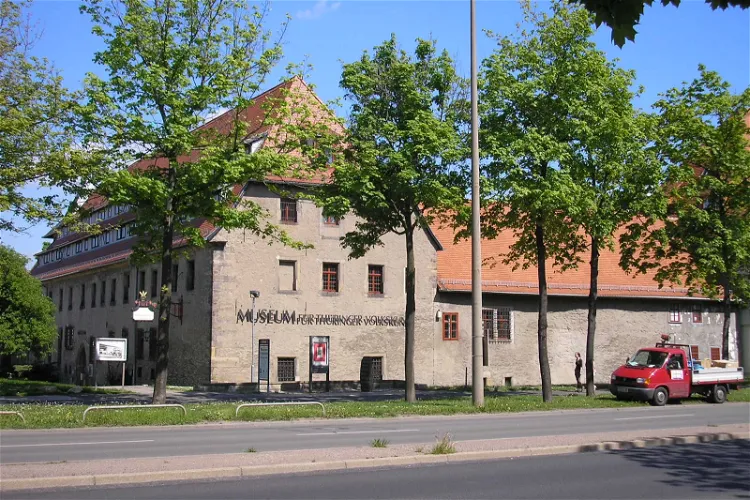
Museum für Thüringer Volkskunde
ErfurtThe Museum für Thüringer Volkskunde Erfurt is recognized as one of the largest folk museums in Germany. This makes it a significant destination for those interested in exploring the rich folk culture of the country.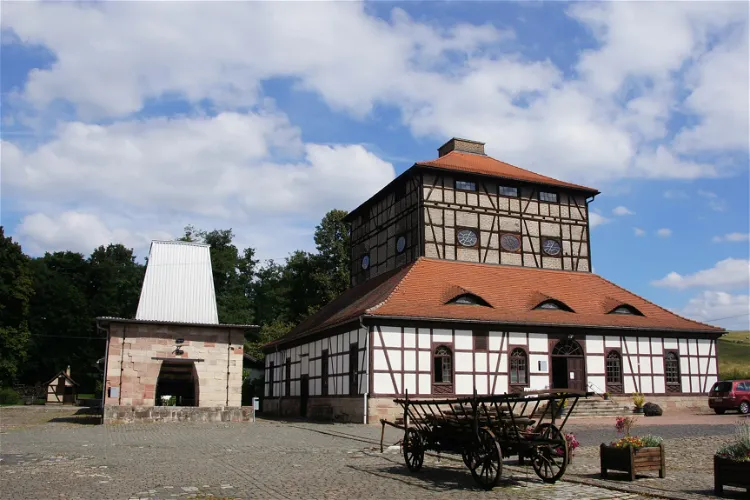
Museum Neue Hütte
SchmalkaldenThe Neue Hütte Technical Museum in Weidebrunn is a significant historical building and technical monument in the city of Schmalkalden, Thuringia. It stands as a testament to the city's long-standing history in the iron and steel industry, dating back to the High Middle Ages. The museum is located on the outskirts of Weidebrunn and can be easily reached by city bus from the old town, which is 3 km away.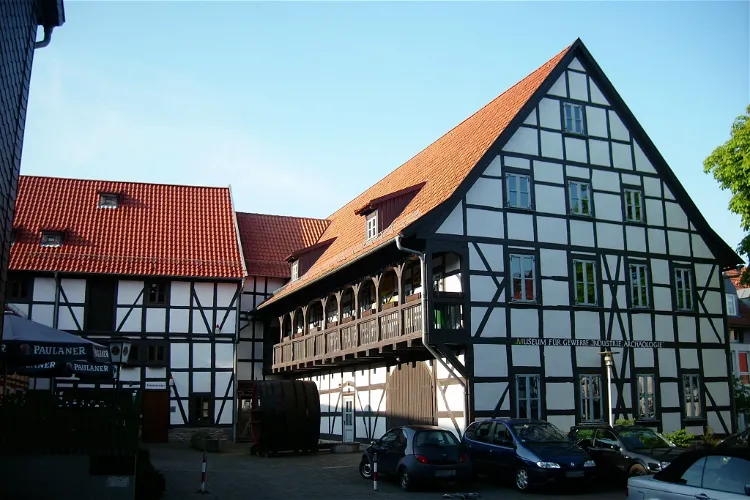
Museum Tabakspeicher
NordhausenThe Tabakspeicher is a city museum located in Nordhausen, Thuringia. It is dedicated to showcasing the historical and cultural development of the city. Visitors can gain insights into the city's past and understand its evolution over the years.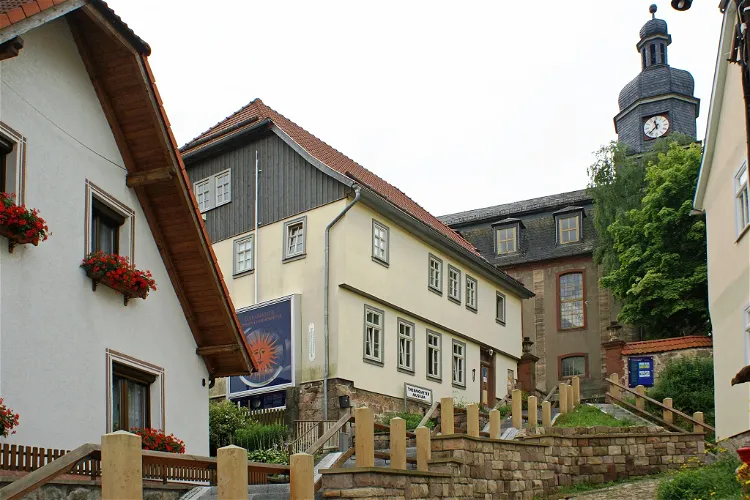
Deutsches Thermometermuseum
GerabergThe Deutsches Thermometermuseum Geraberg is a technical museum that is situated in the historical town center of Geraberg in Thuringia. This location is not only rich in history but also offers a unique cultural experience for tourists who are interested in technical advancements and historical artifacts.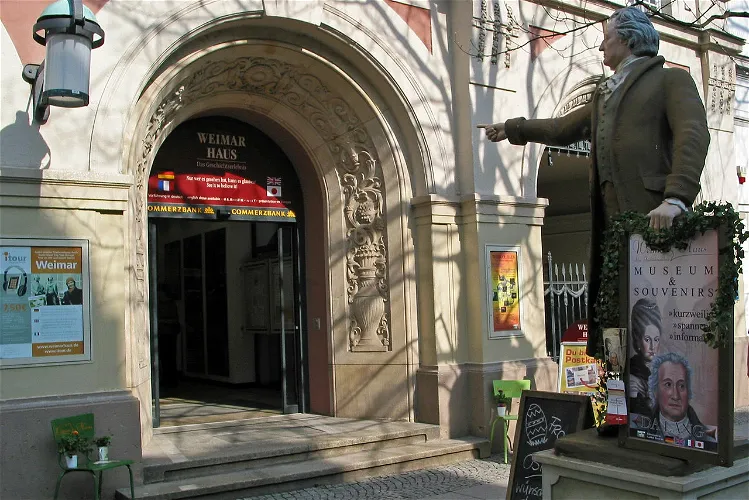
Weimarhaus
WeimarThe Weimar Haus is a unique museum that offers a comprehensive view of the city's history, from the Stone Age to the Weimar Classicism. The museum uses dioramas with wax figures, elaborate light installations, and appropriate soundscapes to bring each era to life. This immersive experience allows visitors to gain a deeper understanding of the city's past and its cultural significance.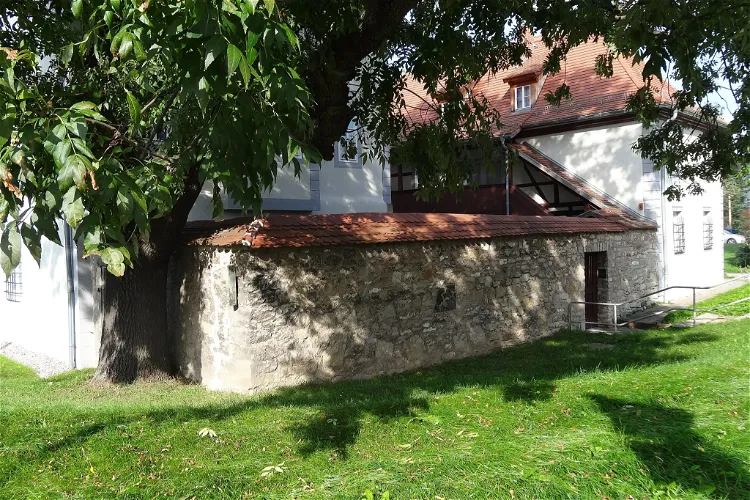
Zentrale Restaurierungswerkstätten
Erfurt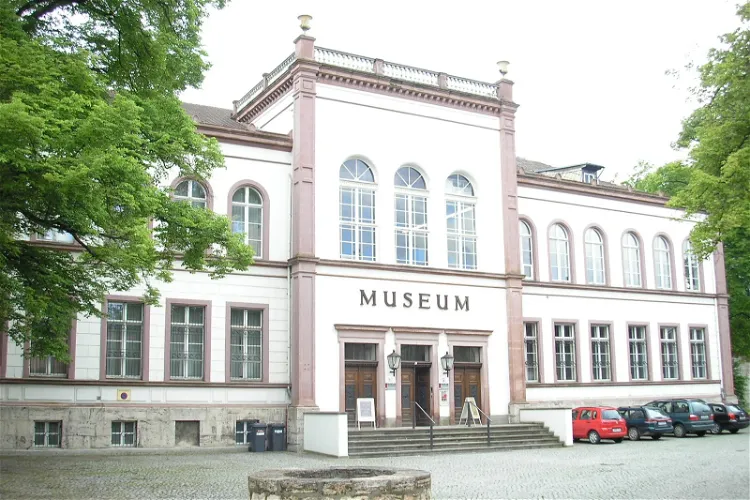
Kulturhistorisches Museum
MühlhausenThe Museum am Lindenbühl is a cultural history museum situated in Mühlhausen/Thüringen. It is housed in a Neo-Renaissance style building that was built between 1818 and 1871 as a gymnasium. Since 1947, it has been home to a regional history museum.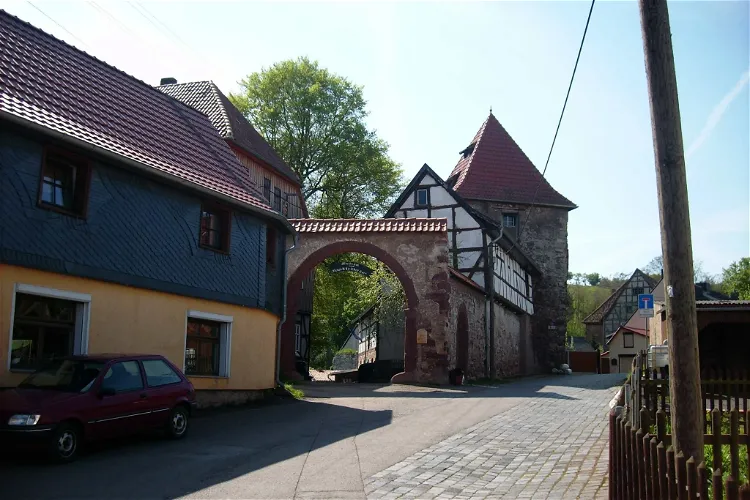
Neuer Rüxleber Hof
Heringen/Helme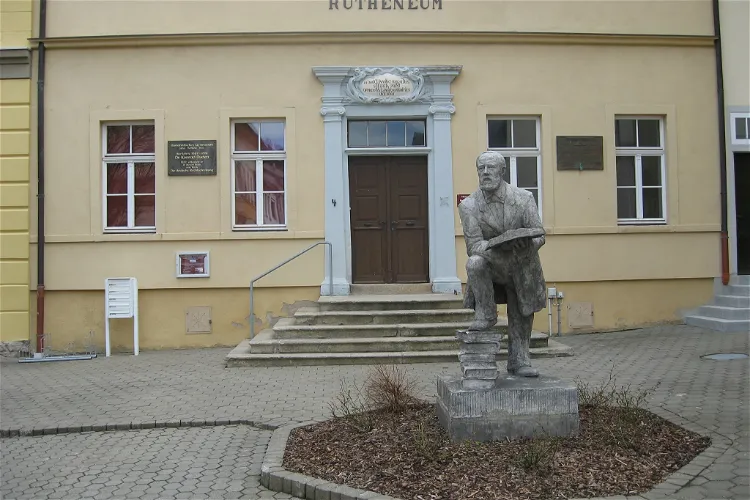
Rutheneum Schleiz
Schleiz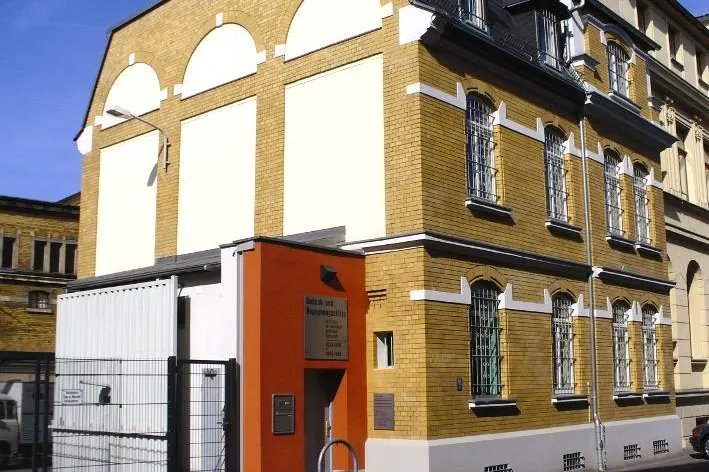
Gedenkstätte Amthordurchgang e. V.
GeraThe Gedenkstätte Amthordurchgang in Gera serves as a memorial site for the victims of both German dictatorships. It is an important point of contact for communication, information, and documentation. The memorial is located in a building that was part of a prison built in 1874 and served as a detention center until 1989. The actual cell block was demolished in 1999, and the memorial is now located in the former administrative wing of the prison.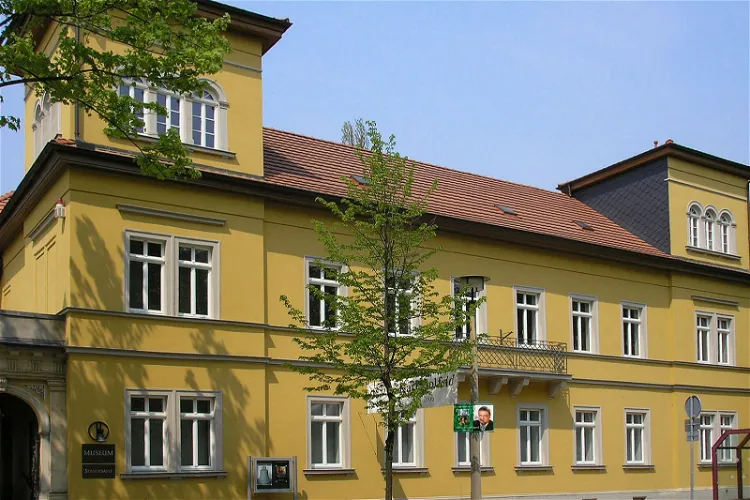
GlockenStadtMuseum
ApoldaThe Glockenmuseum and the Stadtmuseum are both located in a neoclassical factory owner's villa in Bahnhofstraße, Apolda. This historical building provides a unique setting for the museums, adding to the overall experience of the visitors.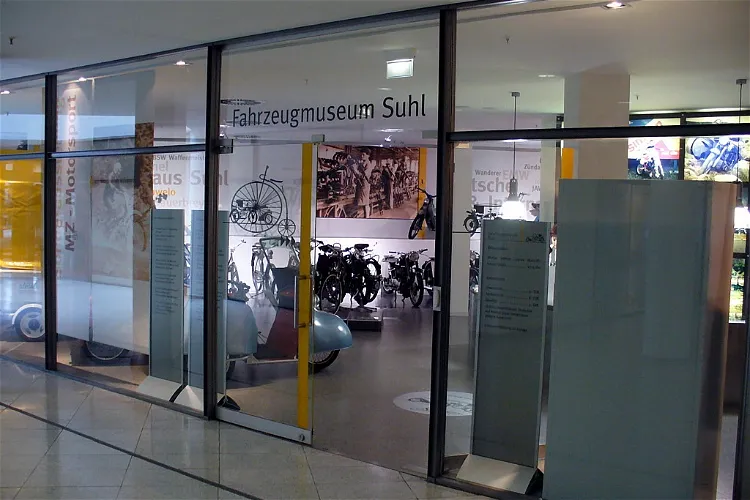
Fahrzeugmuseum Suhl
Suhl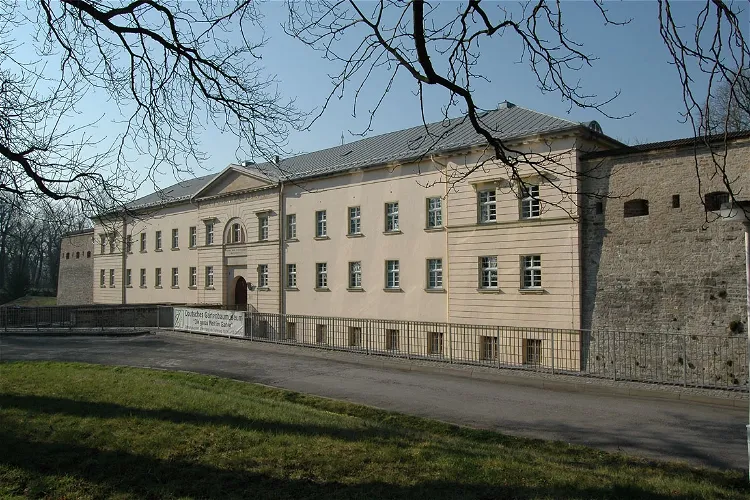
Deutsches Gartenbaumuseum
ErfurtThe Deutsches Gartenbaumuseum is situated in the historic Defensionskaserne of the Cyriaksburg Citadel, within the grounds of the Erfurt Horticultural Exhibition, Egapark. This location not only provides a rich historical backdrop for the museum but also situates it within a vibrant horticultural environment, making it an interesting destination for those interested in gardening and horticulture.- 90
Tiergehege Zeulenroda-Triebes
Zeulenroda 
Kleine Synagoge
ErfurtThe Kleine Synagoge, or Small Synagogue, is a historic site located in the old town of Erfurt, directly on the Gera river and behind the town hall. This former synagogue offers a unique glimpse into the city's Jewish history and is easily accessible due to its central location.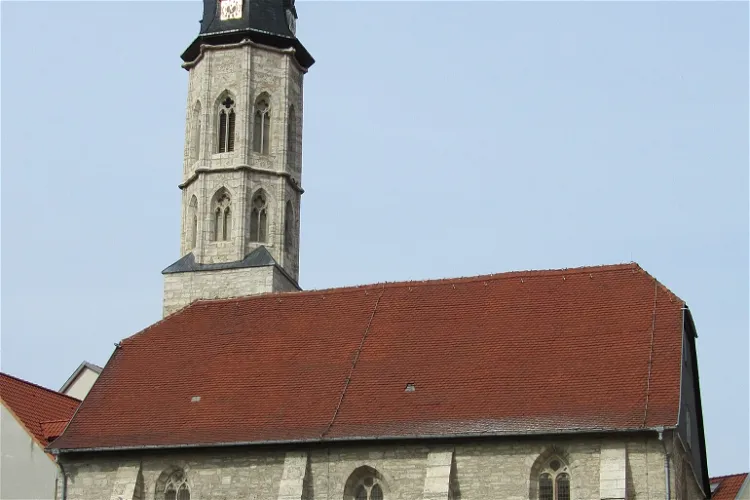
Allerheiligenkirche
MühlhausenThe Allerheiligenkirche, located on the lower Steinweg in the county town of Mühlhausen in the Unstrut-Hainich district in Thuringia, currently serves as a museum. This location is steeped in history and offers a unique insight into the region's past.- 93
Greifenwarte Falknerei am Rennsteig mit KIKA Eule Bubu
Waltershausen 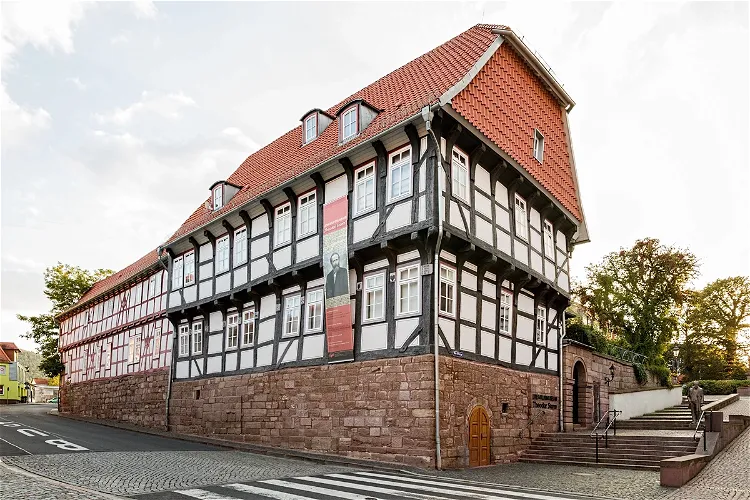
Literaturmuseum Theodor Storm
Heilbad HeiligenstadtThe Literature Museum is housed in the Mainzer Haus, a historical building that dates back to 1436. This building is one of the oldest in Heiligenstadt and has the distinction of having survived the city fire of 1739. The Mainzer Haus adds a layer of historical significance to the museum, making it a site of interest for those keen on architecture and history.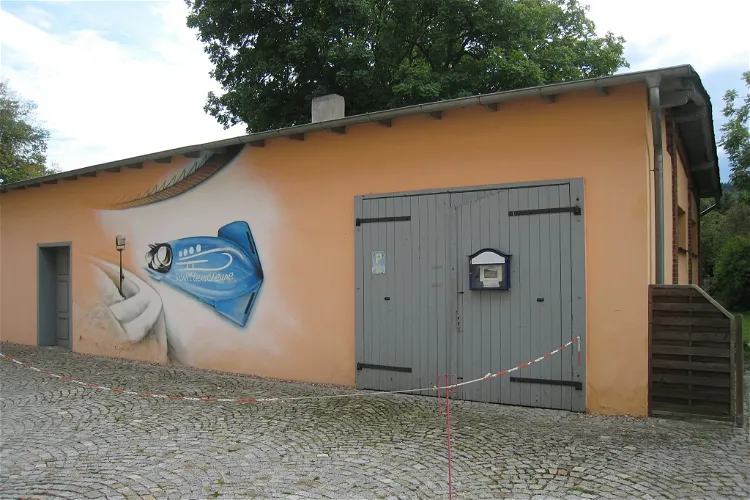
Schlittenscheune
Ilmenau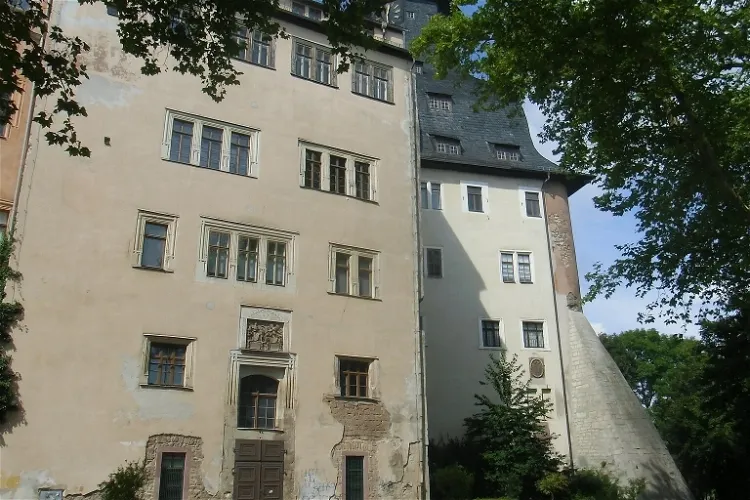
Sondershausen Palace
SondershausenOver the centuries, Sondershausen Palace has undergone numerous architectural transformations, reflecting influences from various periods. The Renaissance influence is evident in the south, east, and old north wings of the palace, which were built between the 1530s and the 1550s. The Baroque style is seen in the alterations and enlargements made to the three Renaissance wings in the 1680s. The Rococo influence is seen in the new west and north wings, which were started in 1764.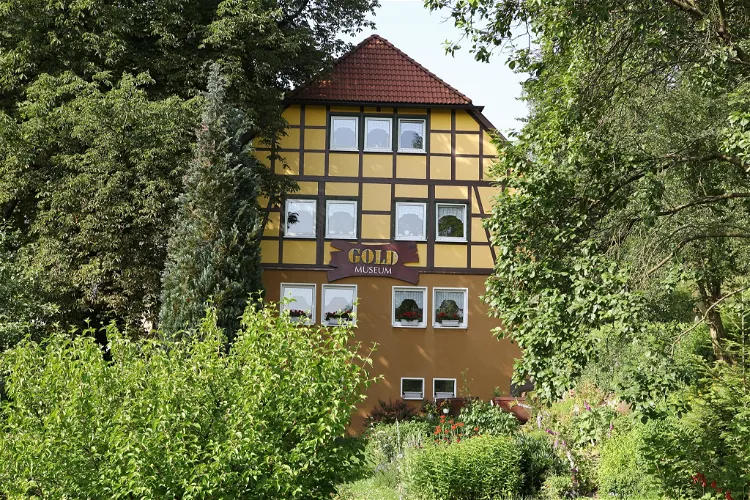
Goldmuseum Theuern
TheuernThe Goldmuseum is situated in the quaint town of Theuern, nestled within the Thuringian Slate Mountains. The museum is housed in a large mill building known as the Burgmühle, adding a unique charm to its location. This setting provides a picturesque backdrop for visitors, making it an interesting destination for those interested in both history and nature.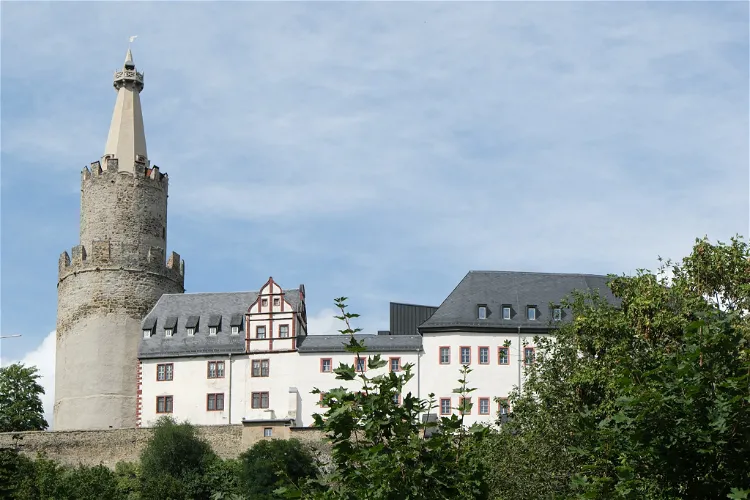
Osterburg (Weida)
WeidaThe Osterburg is a historical castle located on a hill in the center of the city of Weida, in the Thuringian district of Greiz. Its strategic location offers a panoramic view of the city, making it a popular spot for tourists. The castle's history and architecture also provide a glimpse into the region's past.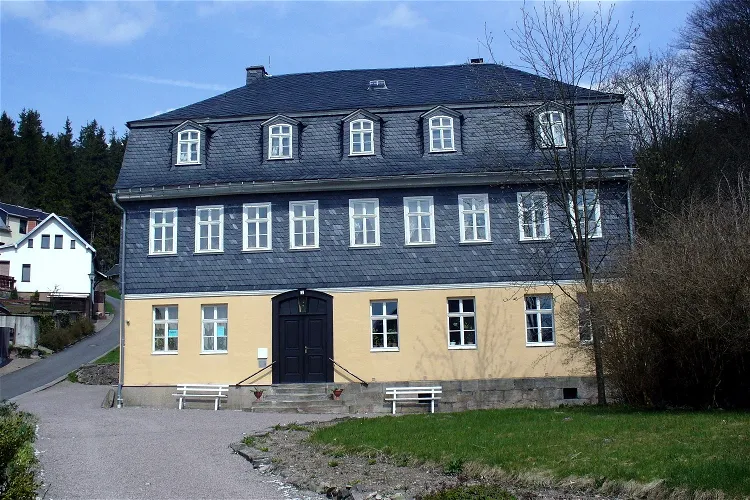
Goethemuseum
IlmenauThe Goethemuseum Stützerbach is situated in the former residence of Johann Niclaus Gundelach, a glassworks owner. This location, nestled between the towns of Ilmenau and Schleusingen, offers a unique historical context for the museum. Visitors can explore the place where Gundelach once lived and worked, providing a tangible connection to the past.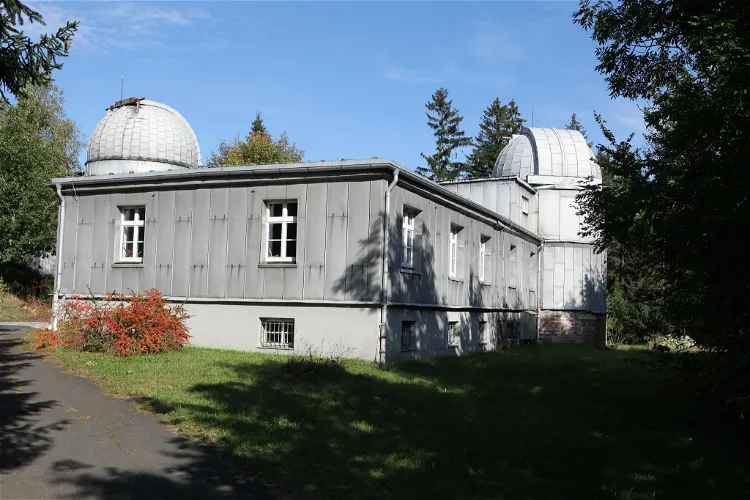
Sonneberg Observatory
SonnebergThe Sonneberg Observatory is home to one of the world's largest collections of photographic plates, housed in its internal astronomy museum. These plates offer a unique insight into the history of astronomical observations. The observatory is primarily used for scientific outreach, making it an excellent place for visitors interested in astronomy to learn more about the field and its history.